Next-Level Habitats: Creative Ways to Break Out of the Corner
I will admit it… when I was encouraged to join a LEGO minifigure habitat challenge early in my MOC-building journey as BrickBuiltJosh, I was not so sure about these small 8x8 square corner builds. They seemed small, constrictive, boxy, and like… everything had to be some corner of a room!
Since then, I’ve built 35 habitats over the last few years, joined several habitat challenges, and found inspiration to break the mold and find new ways to get creative with the format. Part of that is finding creative ways of integrating multiple habitats into a “stack” in interesting ways. So let’s see how we can break the mold, get out of the corner, and be creative with the individual habitats themselves.

Going back to my previous article on building skillful habitats, we delved into five key skills for building more captivating and dynamic builds when building small. Today, we’re completely re-envisioning what a habitat can be. That has helped keep me engaged, inspired, and thinking up new directions to take. Especially when I was first starting and looking to do something dynamic and creative.
So I hope you’ll use this exploration to inspire, to open your mind to new possibilities, and to think of creative approaches to building LEGO habitats. Let’s begin.
Corner, What Corner?
The standard format for a habitat is basically a corner of a room. But what if it wasn’t? What if it could be more? What if it could be something completely different?
You can easily stay within the 8x8 format while curving or cutting off the corner to create a different look, soften that hard edge, or allow for a centered element that faces the viewer. Lego_nano_1 gives us a good example below. By cutting off the corner, she’s able to highlight the painting that Rapunzel is working on of the lantern festival she loves so much.
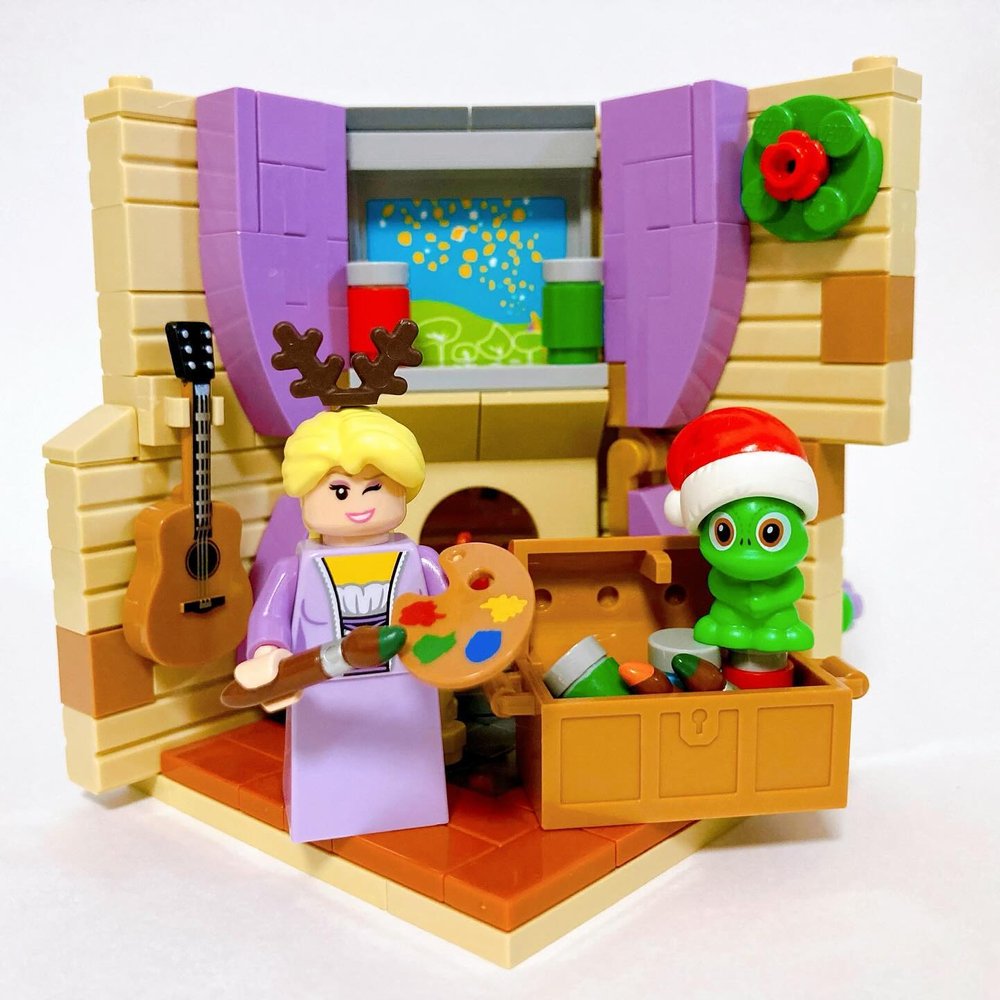
Or take this unique take on a habitat that again dispenses with the back corner by having the bed angled towards the viewer. Not only that, but The Plastic Wanderer recreated the look of her original family Disney photo—complete with a white Polaroid-style border!
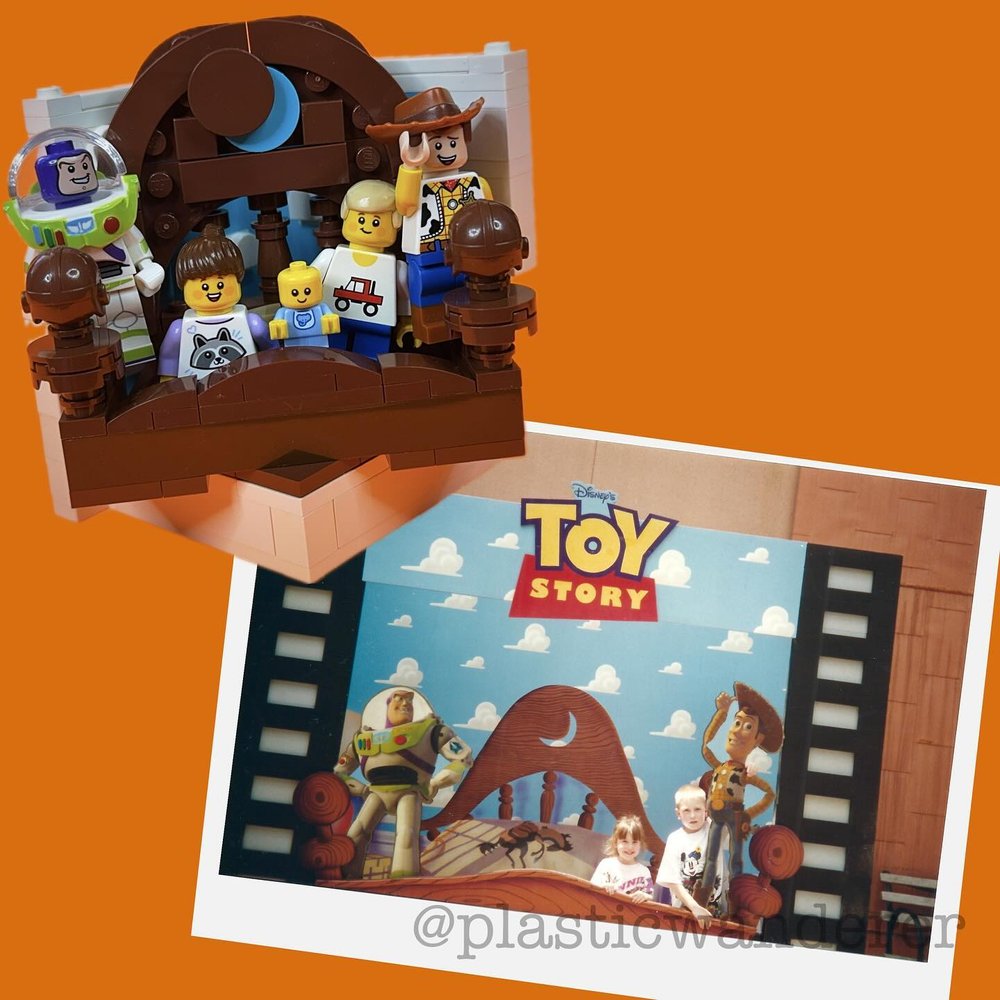
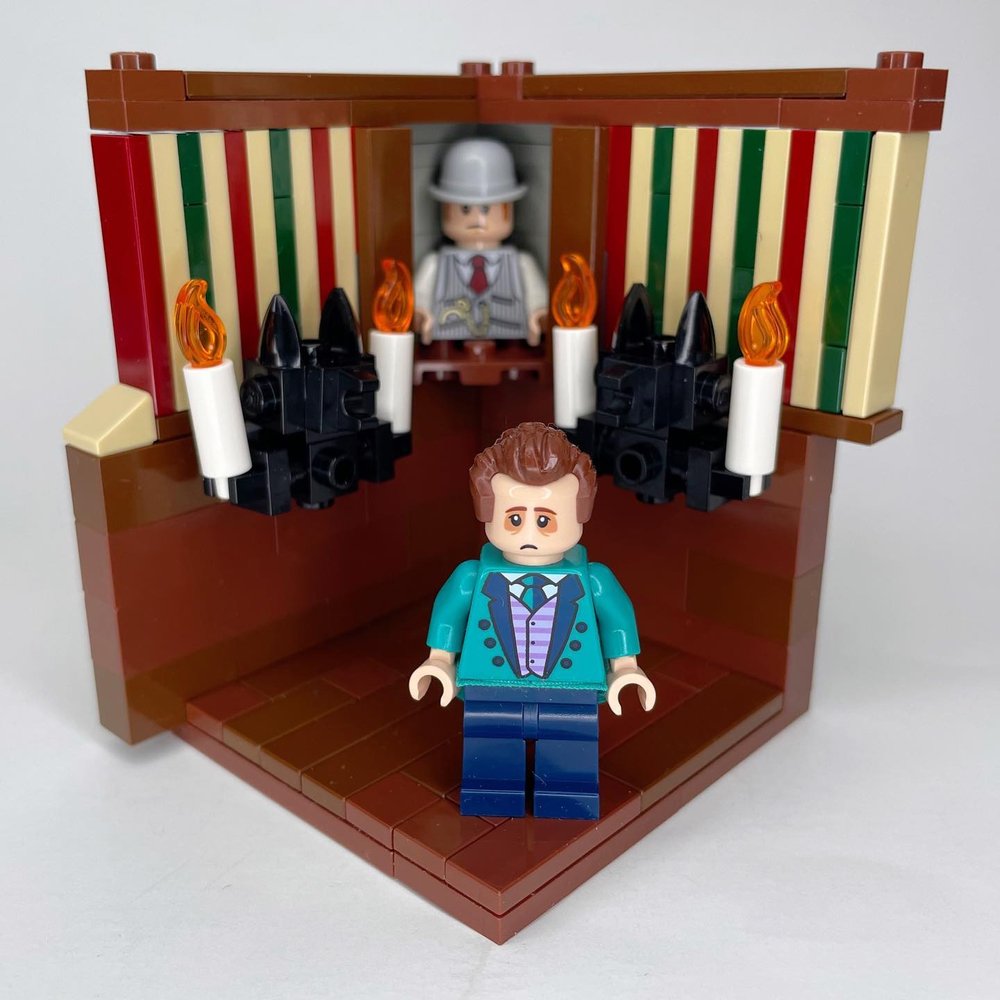
In this Haunted Mansion stretching room habitat, Brian cuts off the corner to focus on the stretching room portrait. The “painting” uses a minifigure to represent the subject in the stretching portrait. He cleverly sets the minifigure and grey background back from the walls inside the “frame” of the painting, all to help create the illusion.
In my own habitats as BrickBuiltJosh, I’ve used this technique many times. I like how it breaks the look of a hard corner, and also allows me to center visuals relative to the viewer.
Maleficent’s throne, for example, is centered in the habitat below. Then lights and transparent elements create the effect of her powers manifesting. The throne and wall behind it utilize a combination of tiles and rounded pieces (including the 1x2 rounded plate that I love!) to angle it and connect it to the existing walls.
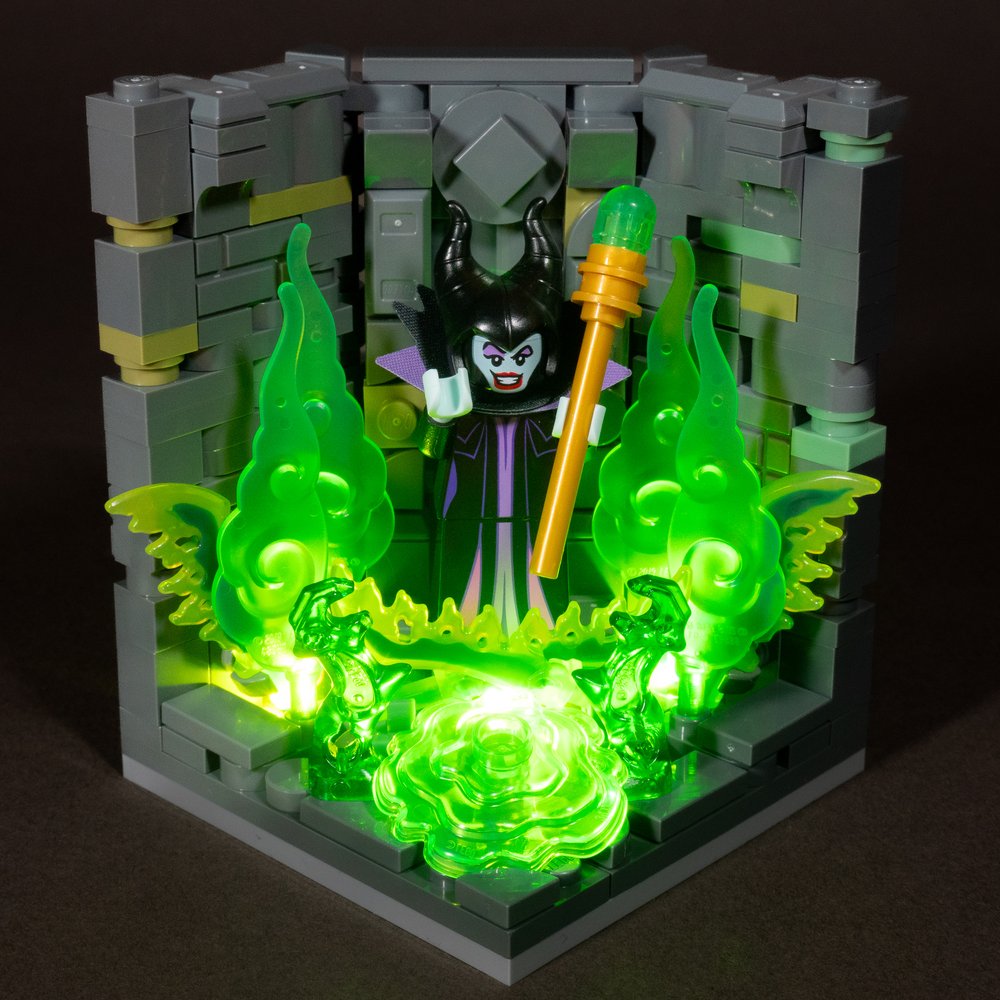
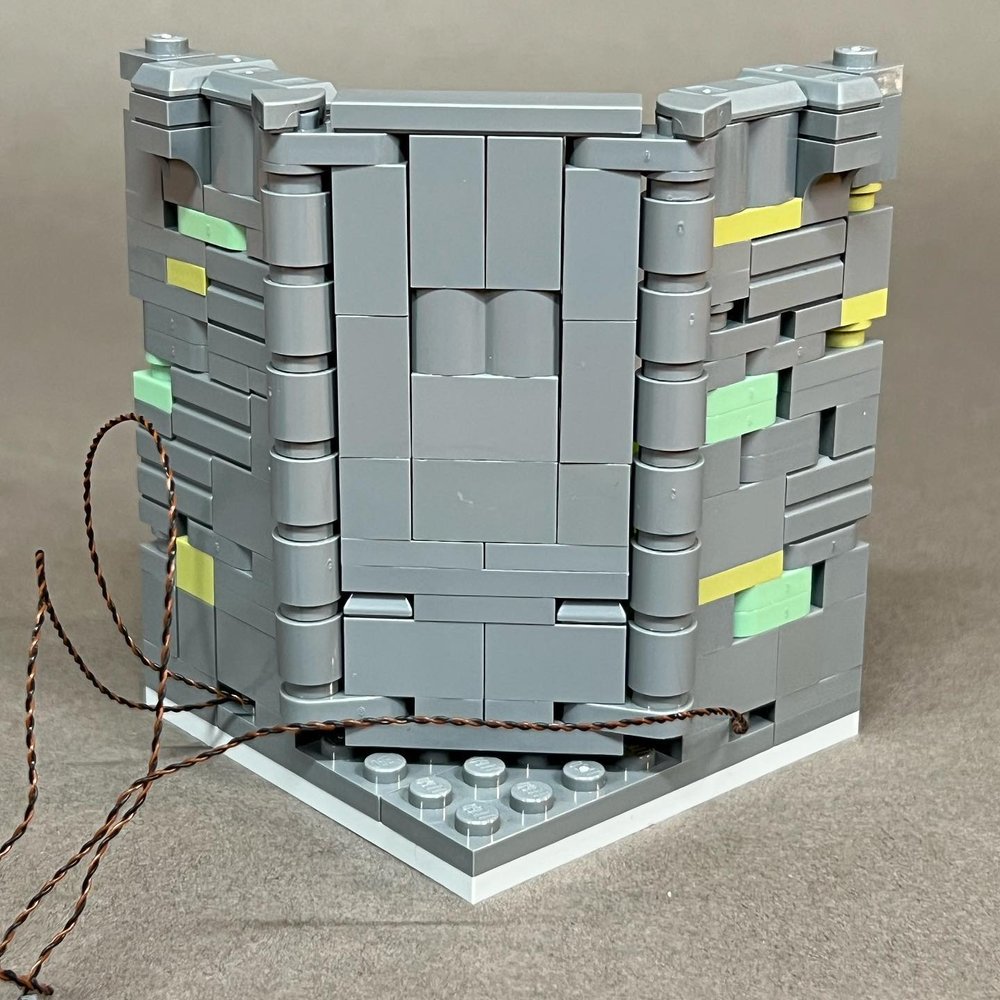
My Explorer/Johnny Thunder ancient ruins habitat puts a central focus on the pedestal and artifact, and it utilizes this old printed shield for an interesting detail on the wall behind it. Again, I’m using 1x2 rounded plates along with some round bricks to achieve the angle/curve.
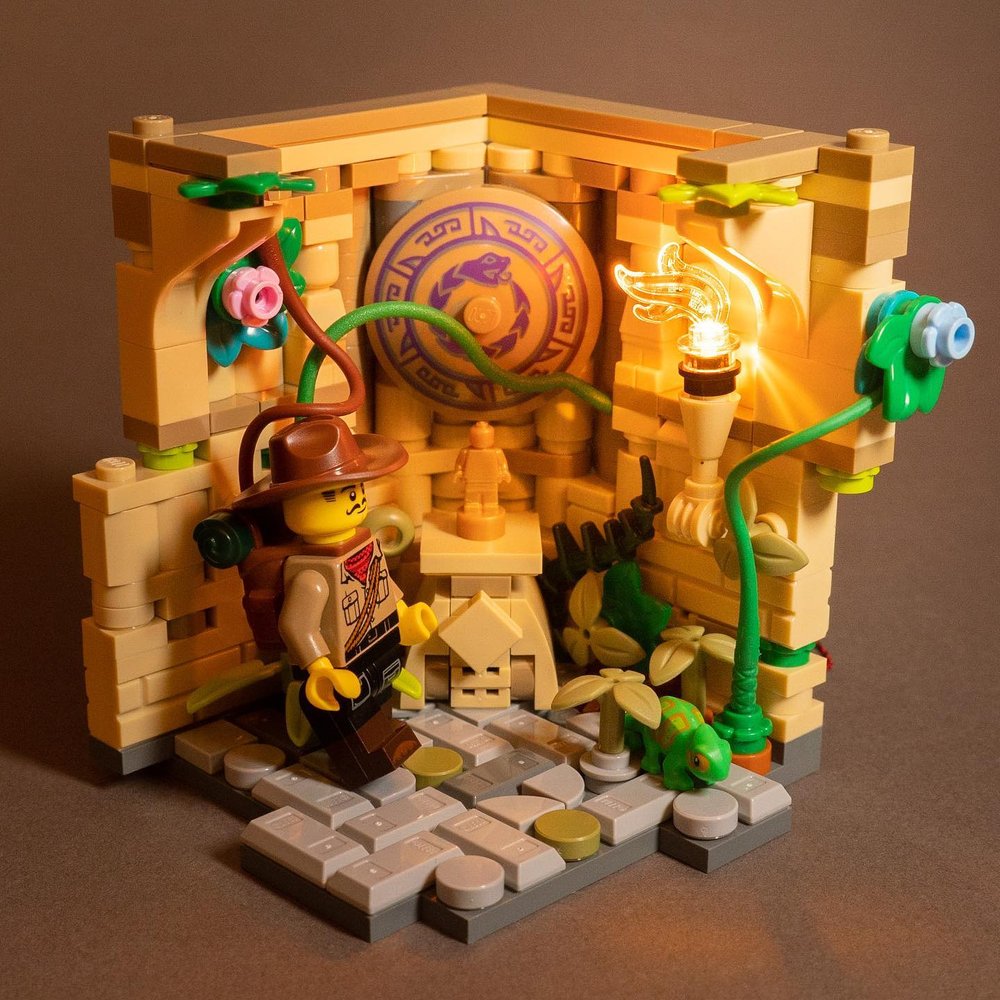
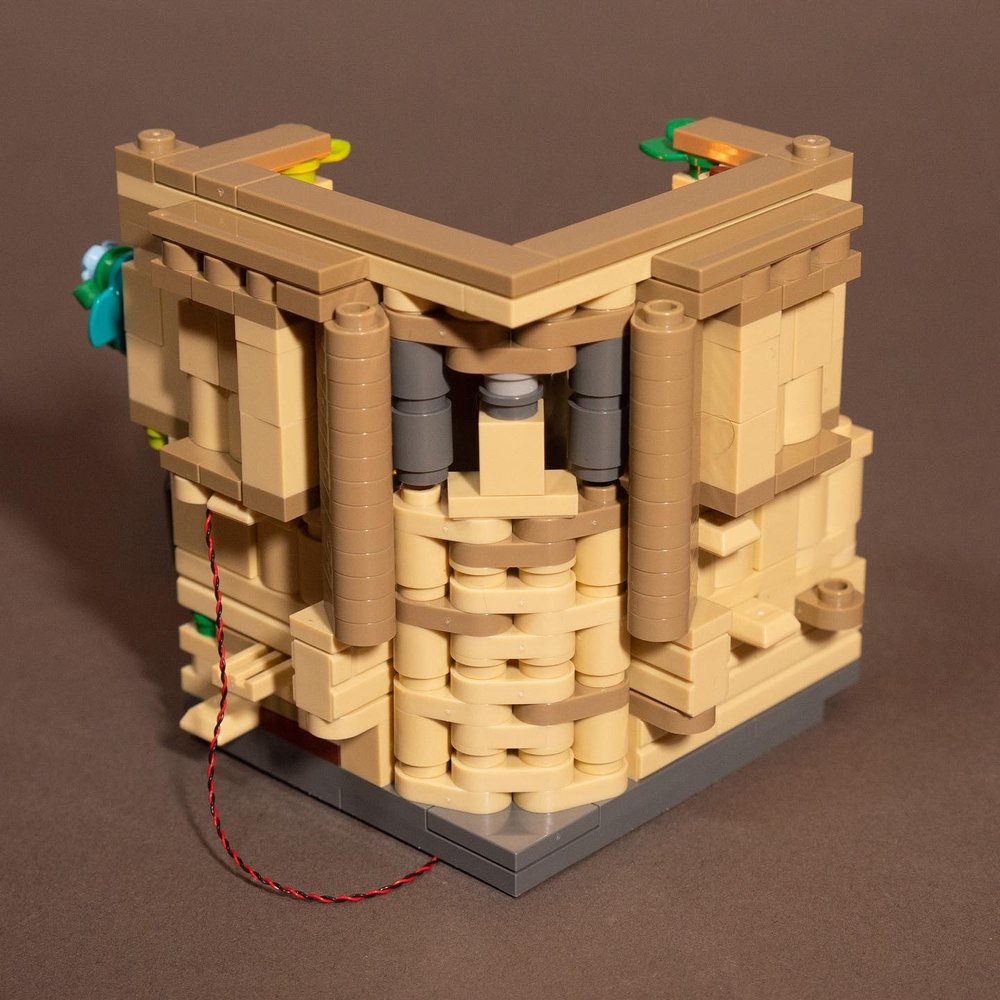
I’ve found no good way to cut off the corner using hinges as it doesn’t align perfectly to the stud grid. So I’ve found using 1x2 round plates helps immensely with cutting off the corner (whether you curve it or do a straight angle).

In this corner, the curved black wall behind the Evil Queen’s magic mirror looks much better than if it were a sharp corner. It helps to highlight the mirror in the center of the habitat and mimics the curving shapes used throughout the build. This one is by Jen who runs the Habitat Challenges on Instagram.
But we’re just getting warmed up. Eliminating the hard corner takes it up a level, but how else can we break the habitat mold to open our creative possibilities?
Get Some Air: Going Outside
This is one of my favorite ways to flip the concept of a LEGO habitat on its head: go outside instead of inside! Showing an outside scene can bring a breath of fresh air to any build. In fact, this concept is so important to creative habitat building that it will seep into the following sections as well.
Let’s start with taking a step outside the front door with this Halloween habitat (below left) by Gilles (akidandabrick). This creative TFOL brought us outside showing a trick-or-treater approaching a door for candy. The inner walls of the habitat become the outer walls of the house. (Don’t miss the glow-in-the-dark ghost in the window!)
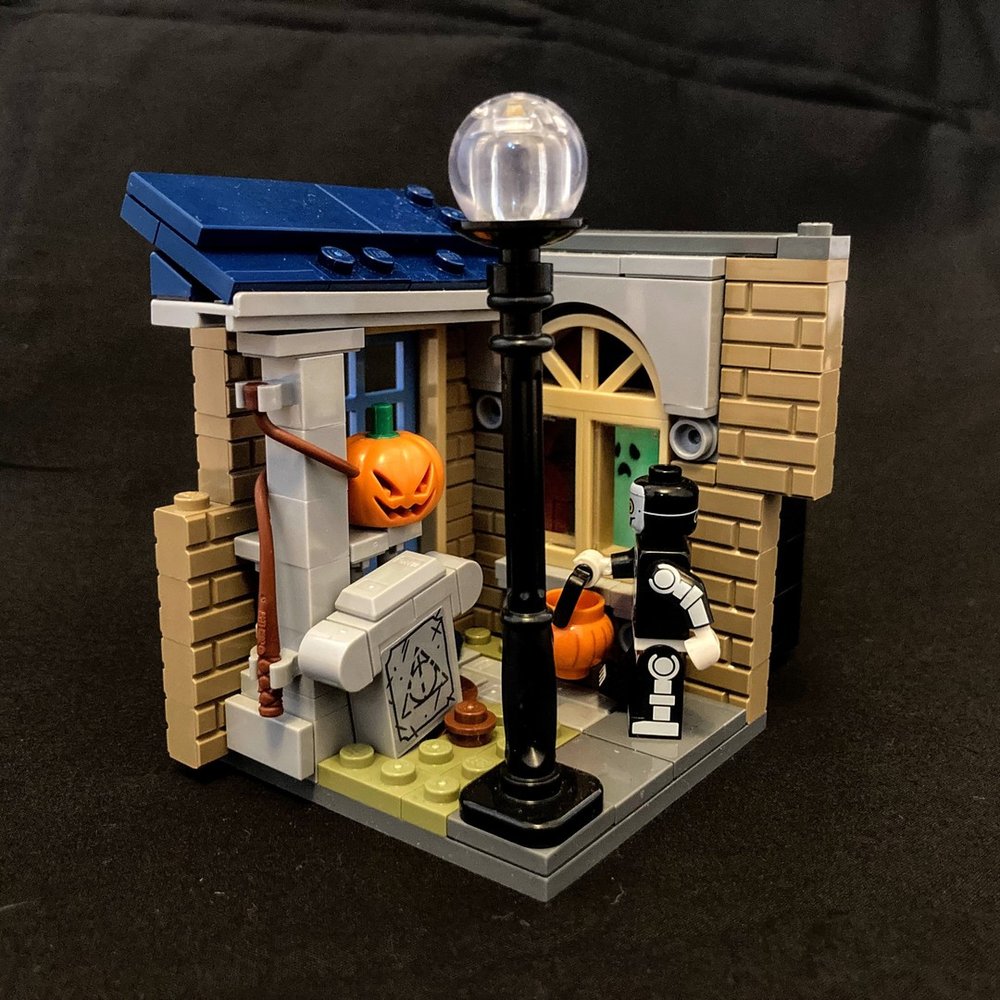
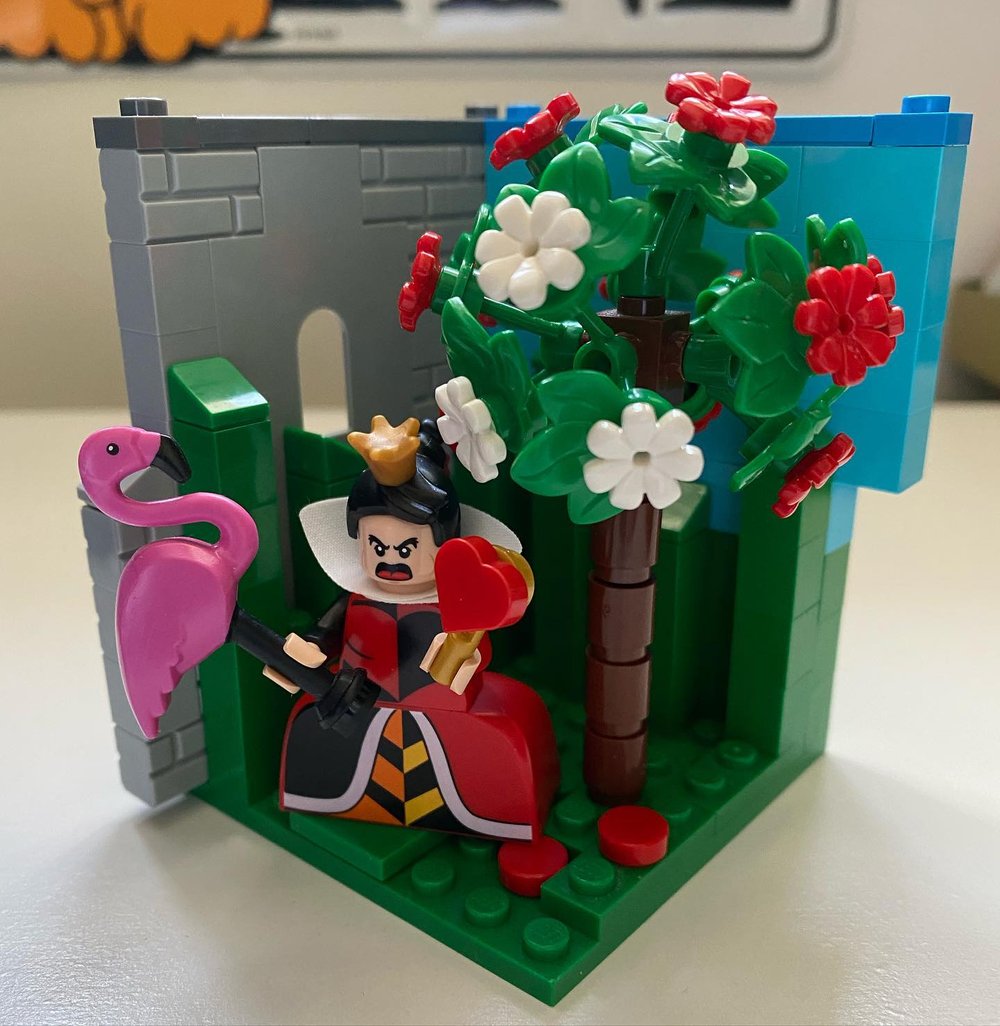
How about going a step further out into the garden? Above, Lisa Fasciglione (lisafasciglione) takes us to the rose garden of the evil Queen of Hearts from Alice in Wonderland. One wall is the garden wall, and the other is the sky and foliage behind the rose bush.
I’ve gone outside with my habitats a lot, including my Robin Hood habitat, with Robin Hood repelling down the castle wall holding his loot, with the crumbling wall on the other side of the habitat. The habitat is filled with trees and ground foliage, including tree leaves that overhang the wall and beyond the base for a more dynamic and realistic look.
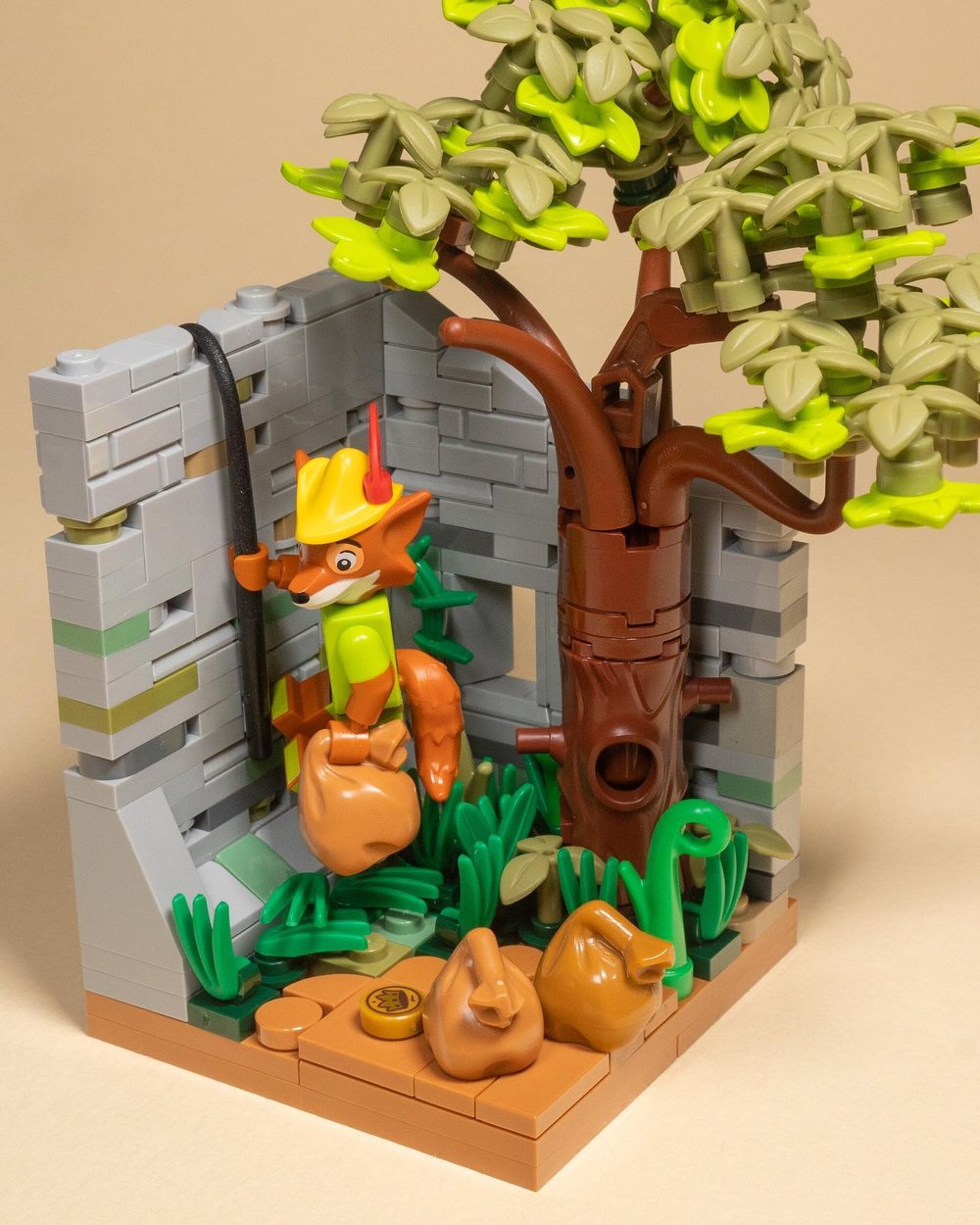
You have to be careful using this technique if your habitat will be stacked with other builders since you need to steer clear of collisions, but if you are building just for yourself or your own stock, you are free to do whatever you want.
“Going outside” opens so many possibilities of what the “walls” of the habitat can be re-imagined to be. The Zen Garden by Gilles (akidandabrick) utilizes a rocky cliff on one side and a building facade on the other. The excellent Barbarian habitat by ABrickDreamer uses a stone portal next to a rock and wood fortress wall.
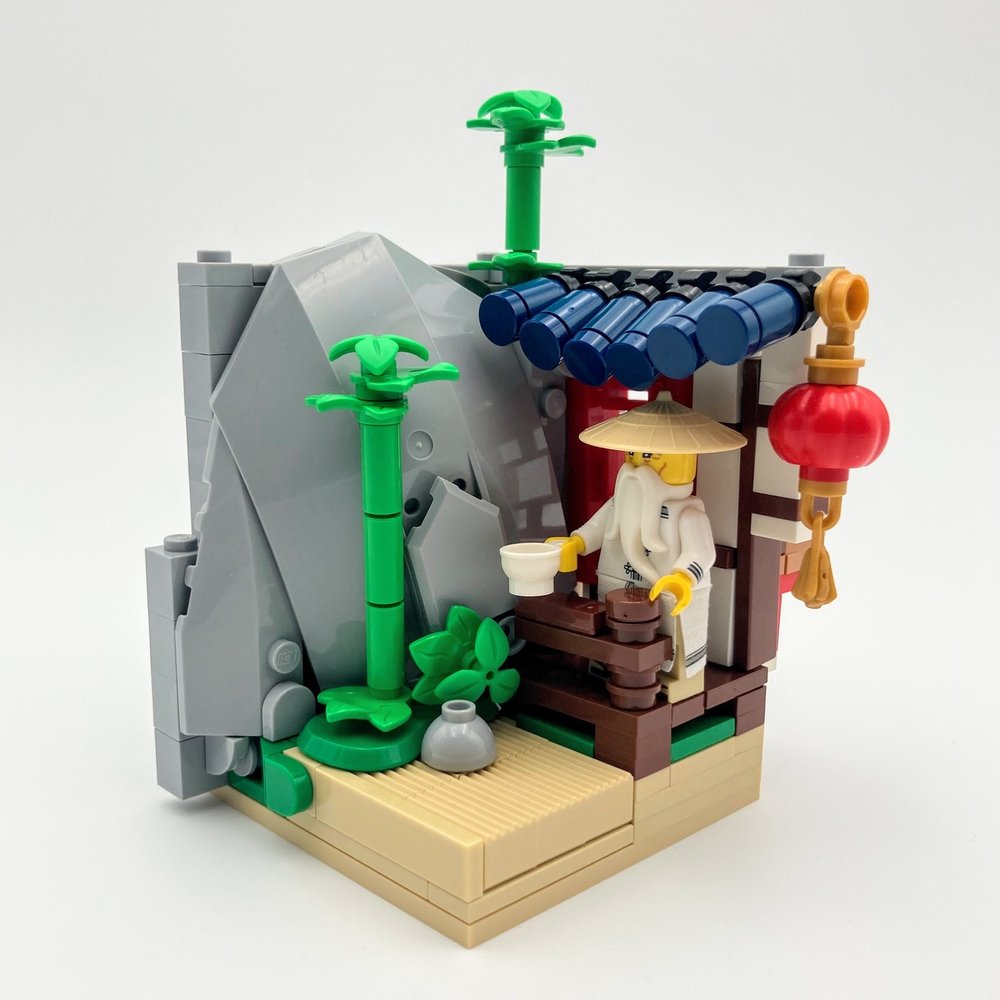
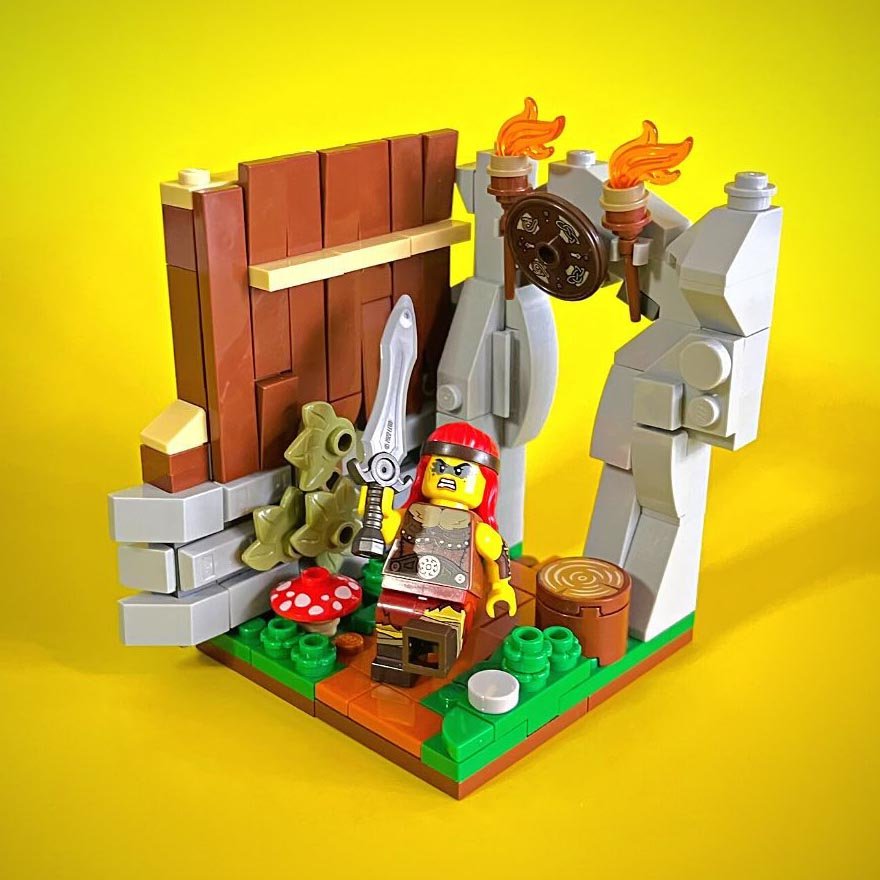
But who says we have to keep our feet on the ground? Grab some pixie dust and “here we gooooo…”
Kyo&Shin take to the skies with Peter Pan, Tinker Bell, and a clever Peter’s shadow. They reimagine a habitat floor as clouds, the walls as the night sky, and bring in a forced perspective scene of Big Ben towering up into the clouds as they fly off. This proves you can go anywhere in a habitat with some creativity!
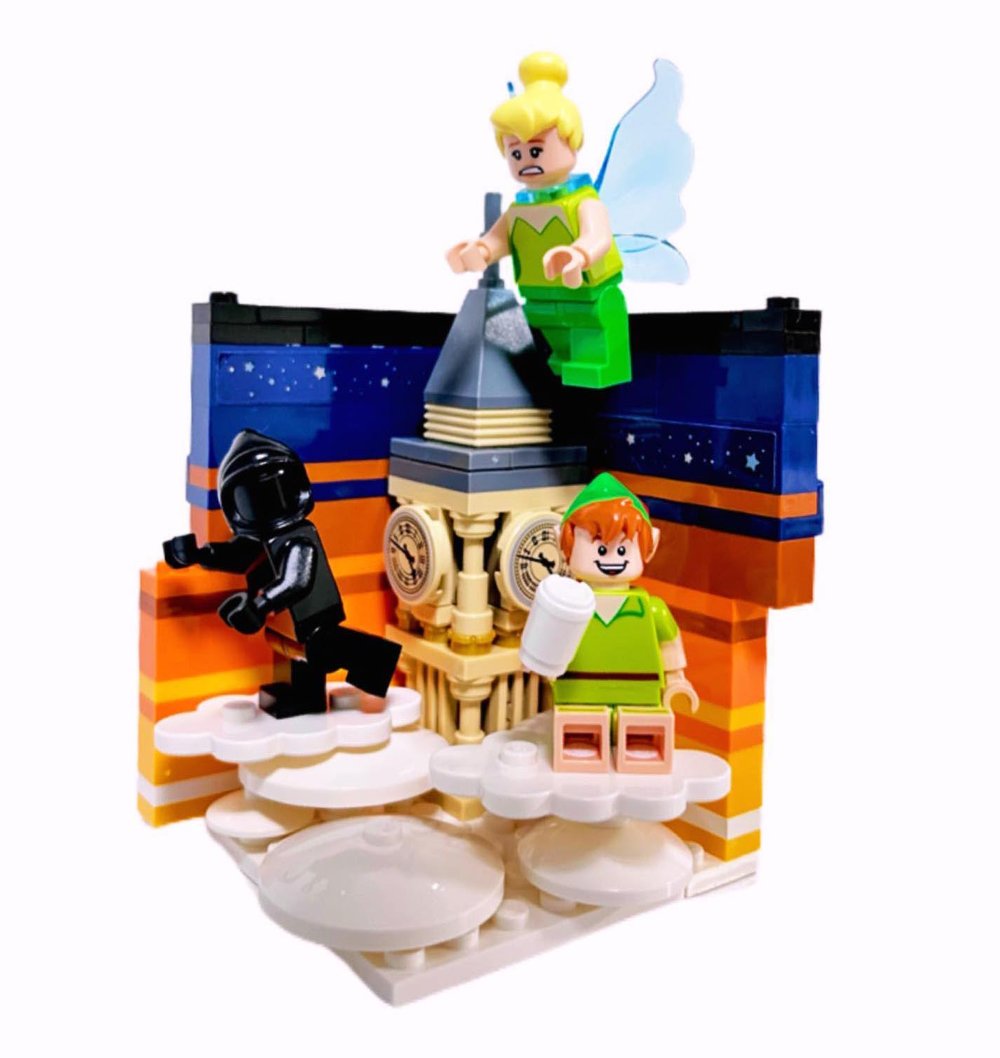
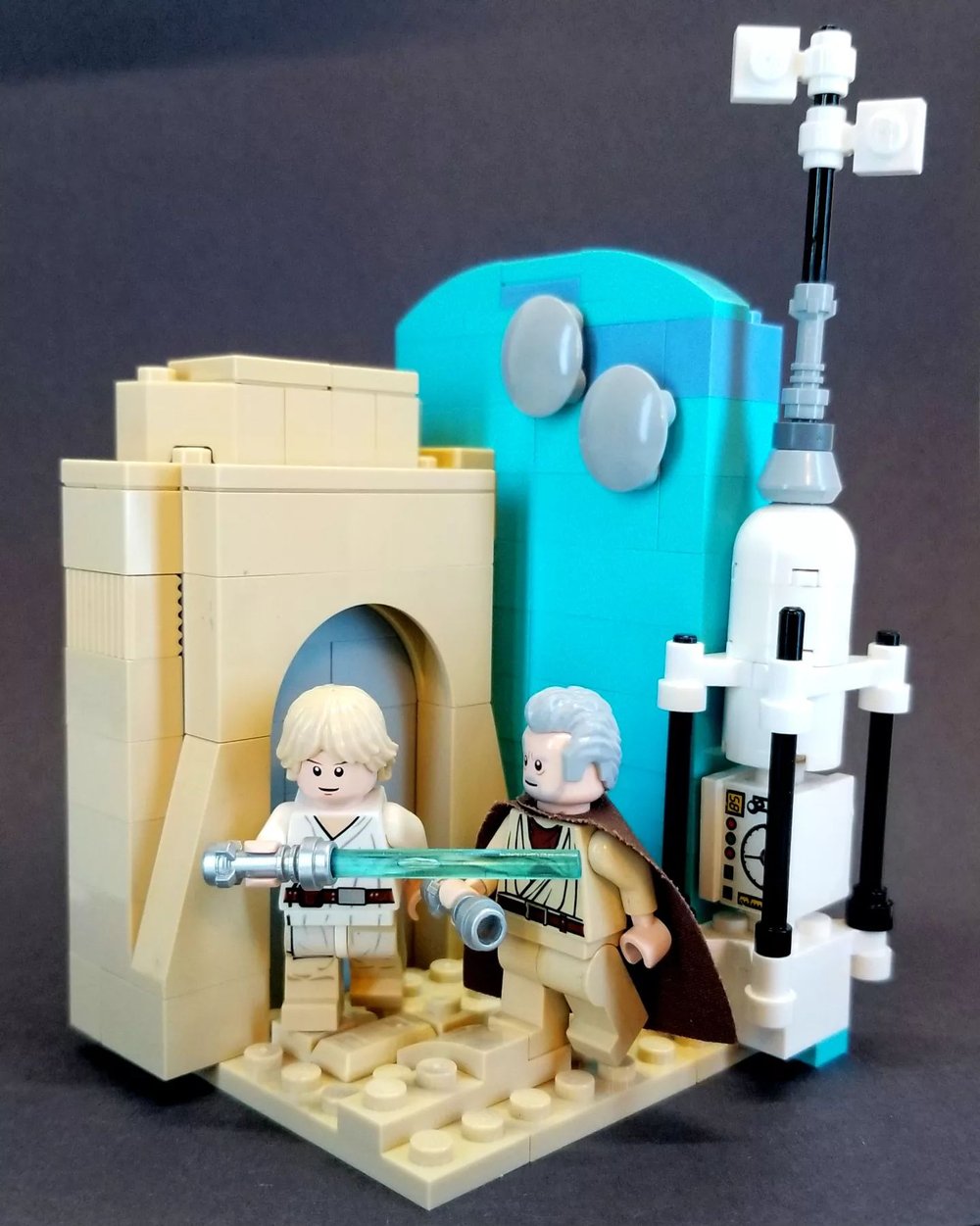
If the sky is not far enough out for you, how about space in a galaxy far, far away? Take a trip to Tatooine with Virtigogh to grab a cup of blue milk at the Lars family homestead with Luke and Obi-Wan. He uses the added depth of the front entranceway to hide the edge of the wall representing the sky, allowing the sky to feel more endless around the homestead. A mini moisture vaporator helps hide the other edge.
Your habitat walls don’t even need to be solid. They can be made of trees, arches, or anything that gives a foothold for connecting and stacking habitats. If you don’t plan to connect a habitat to one of the sides (or both), then you don’t need to bother with connection points at all.
Walls? Where We’re Going, We Don’t Need Walls
So let’s deconstruct this idea further… do LEGO habitats actually need walls?
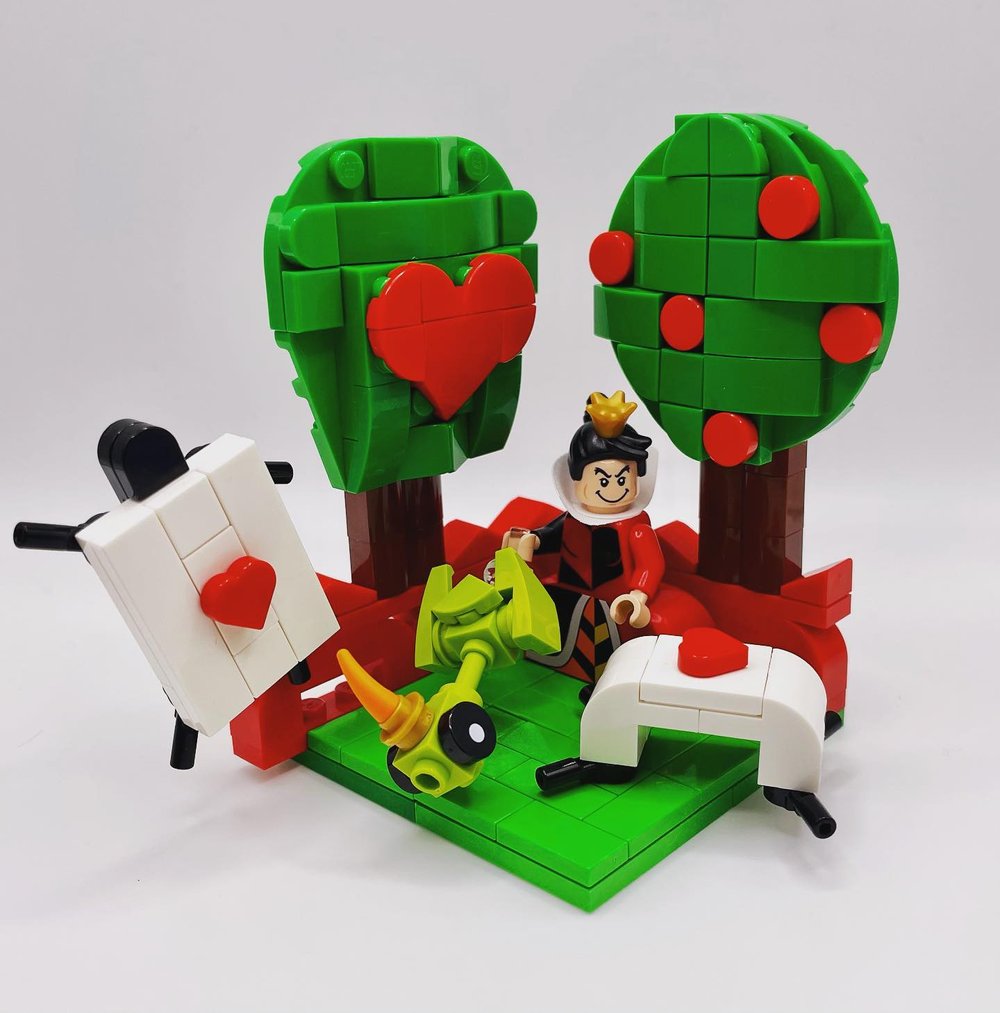
If you’re trying to stack other habitats on top of the habitat you’re building or connect habitats to the side of it, then you’ll need to keep those important connection points in the right place. But if yours is the top of a stack or if it is on the outer edges, that opens up (literally) if you need a wall at all.
Let’s take this Queen of Hearts rose garden scene. Kat dispenses with the wall altogether and uses the garden foliage in place of the walls, leaving a lot of it open. This example is meant to be the top of a habitat stack, so it doesn’t need to connect to anything. That means she can get rid of the walls and do anything she wants with that space. And it works out beautifully.
Meanwhile, ebbuilds313 takes us to the snowy mountains, skating gracefully over the ice and through some trees. This is a beautiful scene only meant to be a single, standalone habitat. The result is effective in bringing a wider outdoor scene into the picture.
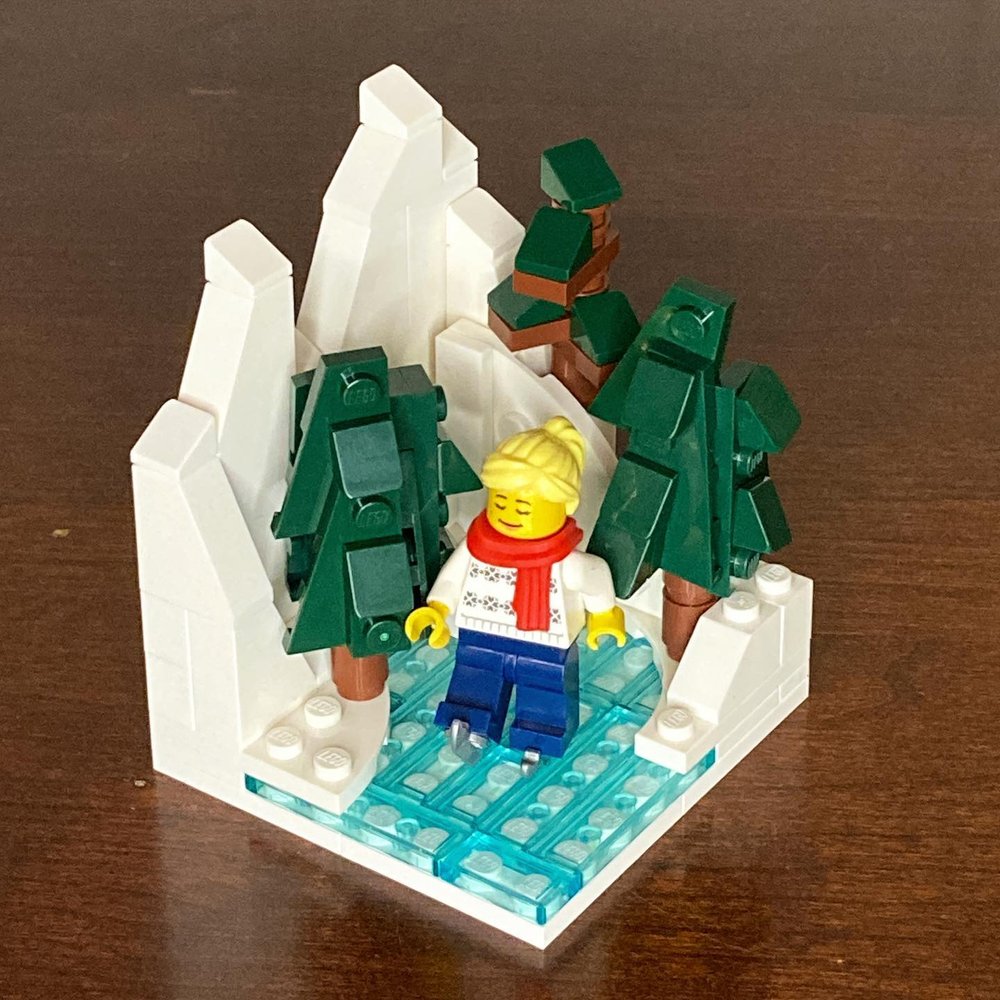
For this next habitat topper, Dana (virginia_bricks) forgoes the walls and builds massively tall with this Peter Pan pirate ship habitat as the boy who never grows up battles with Captain Hook. The habitat isolates a foreshortened back half of the ship to pack the full effect of this Neverland pirate duel into an 8x8 square.
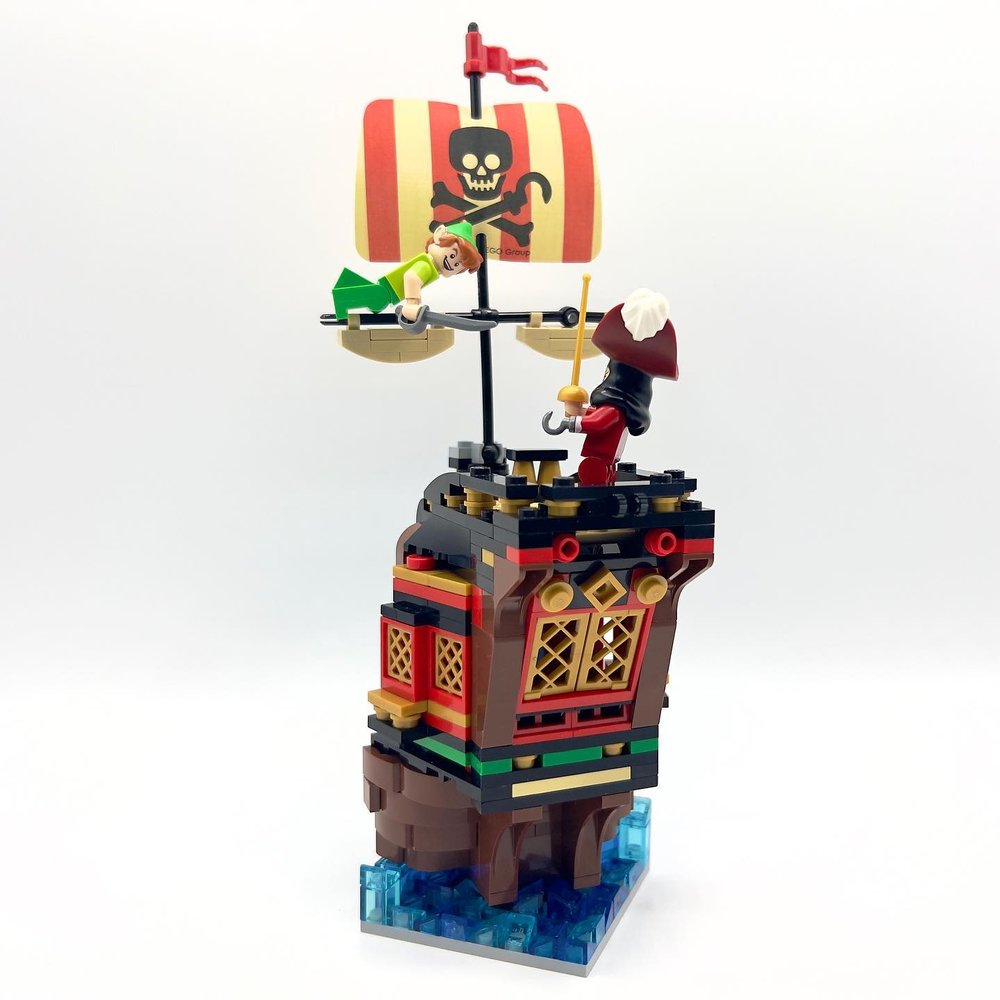
Looking to the sides, when you have a habitat on the outside edge of an integrated habitat stack, then the outer wall doesn’t need connection points. So in this habitat for the Falconer CMF, I went with one wall being the entrance to the tower and the other wall being left out entirely. Instead, that side has trees going up in place of the wall. When the habitat stack comes together, it works together as an integrated tower in the forest. But even on its own, it looks more unique and interesting than two stone walls.


To Be or Not to Be… a Minifigure?
We’re questioning everything here when it comes to what a habitat actually is. What’s more central to the concept of a habitat than the minifigure itself? Do we actually need a minifigure at all? The truth is: no, we don’t. There’s so much we can do for a central focus without using a minifigure.
For a quick and easy example, take a look at this habitat that uses vehicles from the Cars film series. Kristel Whitaker brings us to Radiator Springs with a series of habitats built around Cars characters instead of minifigures.

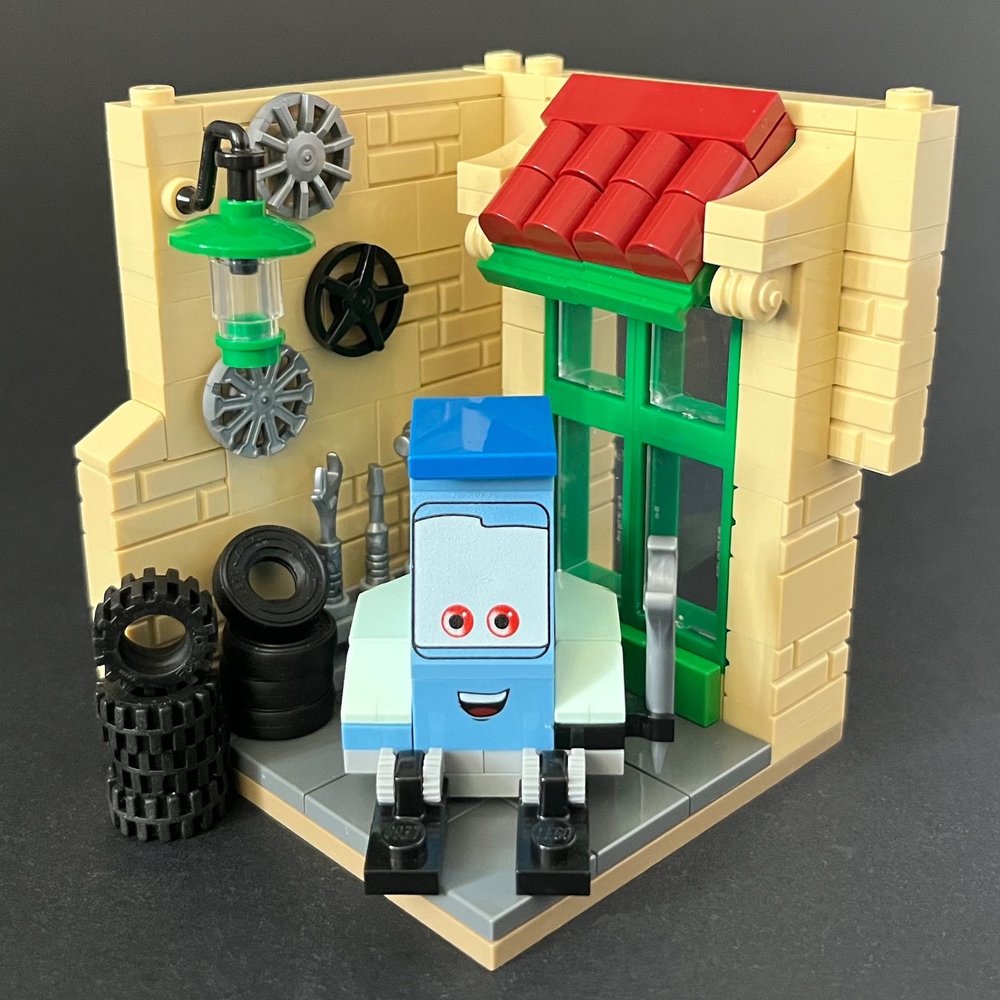
Now let’s go a step further with this Pixar Luxo Jr. habitat by Llano River Blue (femmefromtheblock). It features a completely brick-built character that is simple yet striking and beautifully done. As you can see, a habitat can be built around anything, including brick-built characters or subjects.
Going a little more abstract, why not try microscale? Benjamin Kroeker takes us to Andy’s bedroom from Toy Story for that iconic scene where Buzz proves he can fly—complete with the red ball he bounces off of from the bedpost. Buzz and Woody are easily recognizable with stacks of 1x1 plates in their key colors.
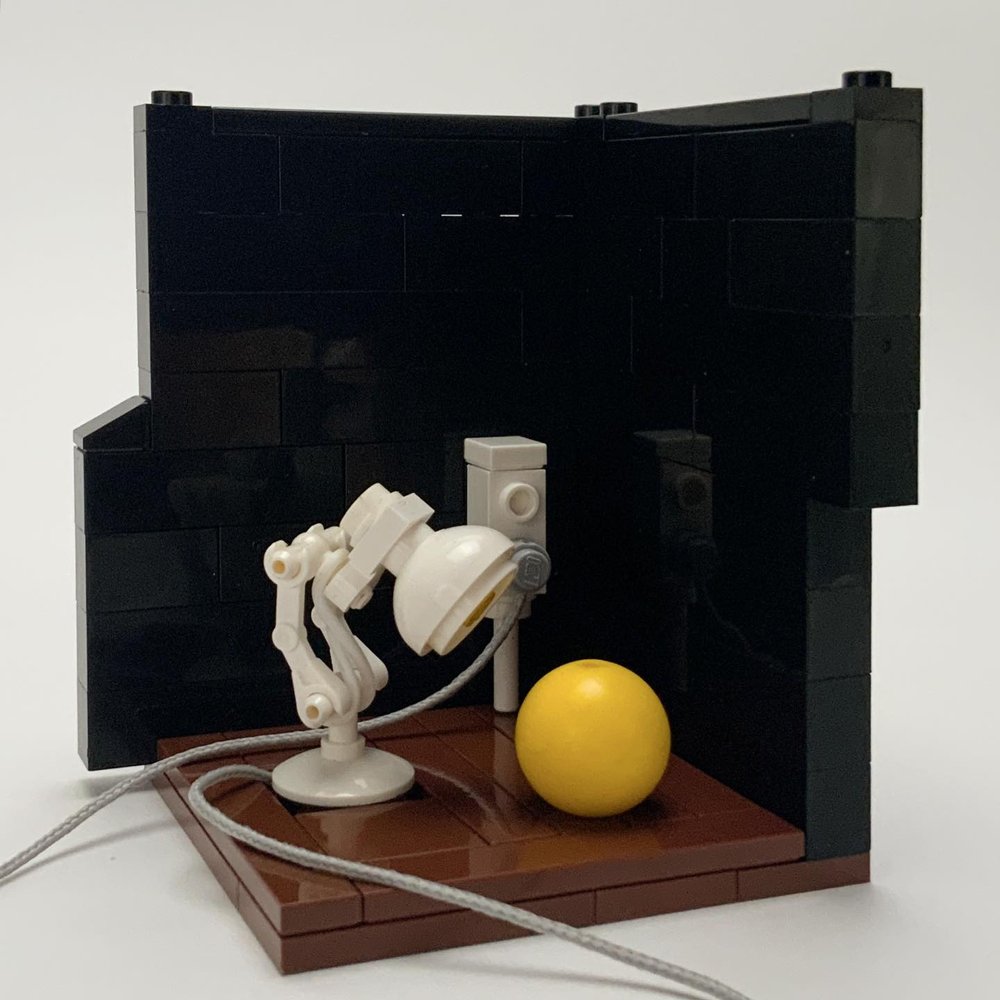
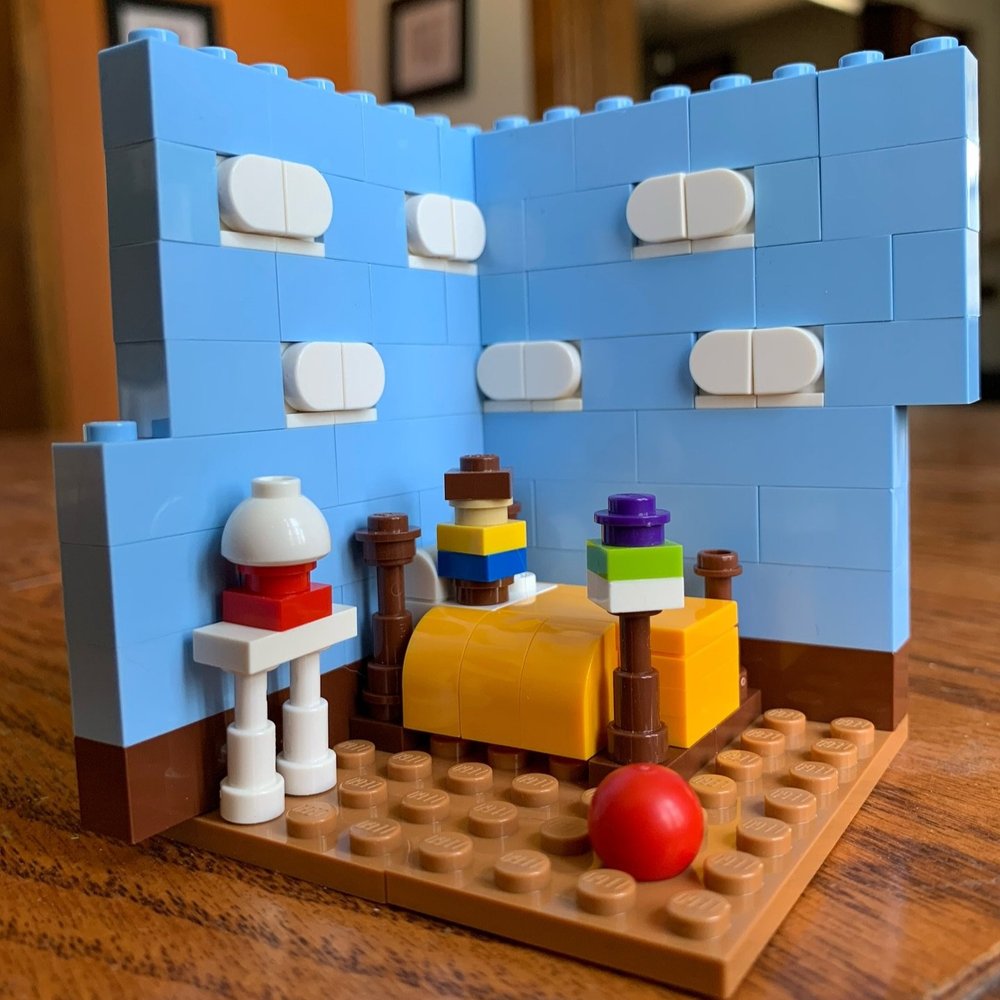
Meanwhile, Matt (Moonmanbricks) uses some microfigures to recreate the “high ground” scene from Star Wars: Revenge of the Sith in microscale, utilizing the style of the LEGO Ideas Tales of the Space Age set to gorgeously create the sky as the walls of the habitat. And Shanzy Holm represents the Up house in microscale as it floats away into the sky.
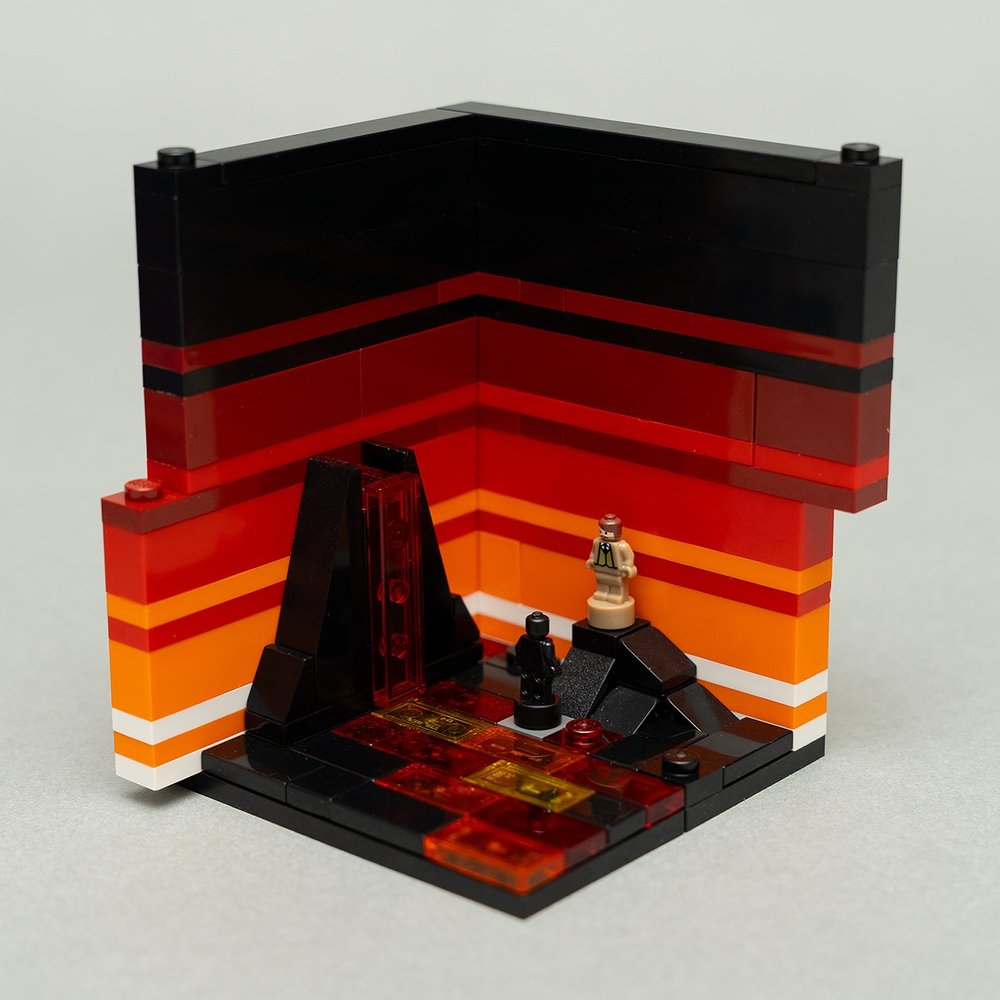
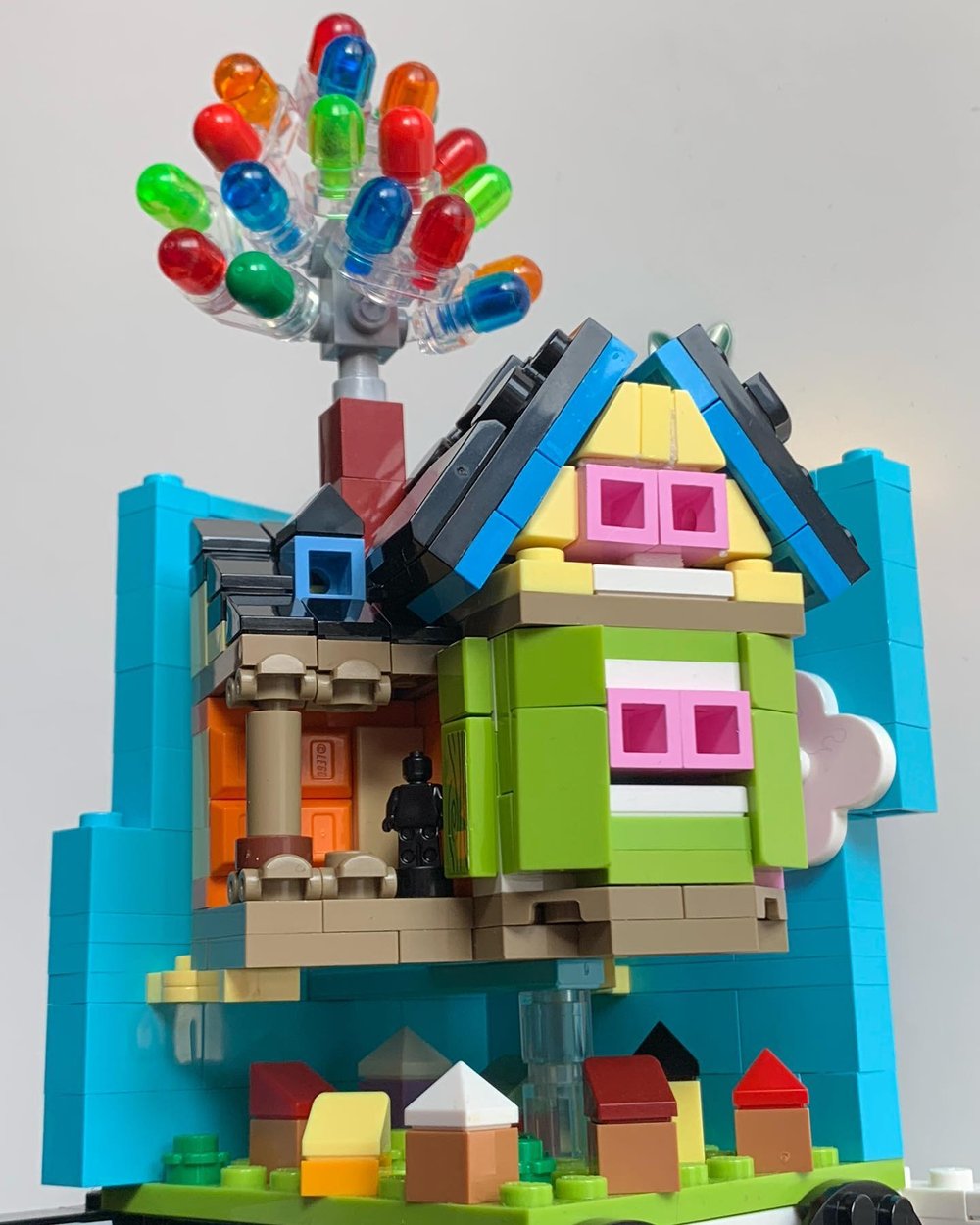
Matt continues his Star Wars microscale habitat series, forgoing figures in favor of a micro-scale AT-TE on Geonosis and the water planet, Kamino. The size and shape of habitats lends itself perfectly to building microscale scenes (including when using forced perspective with minifigures).
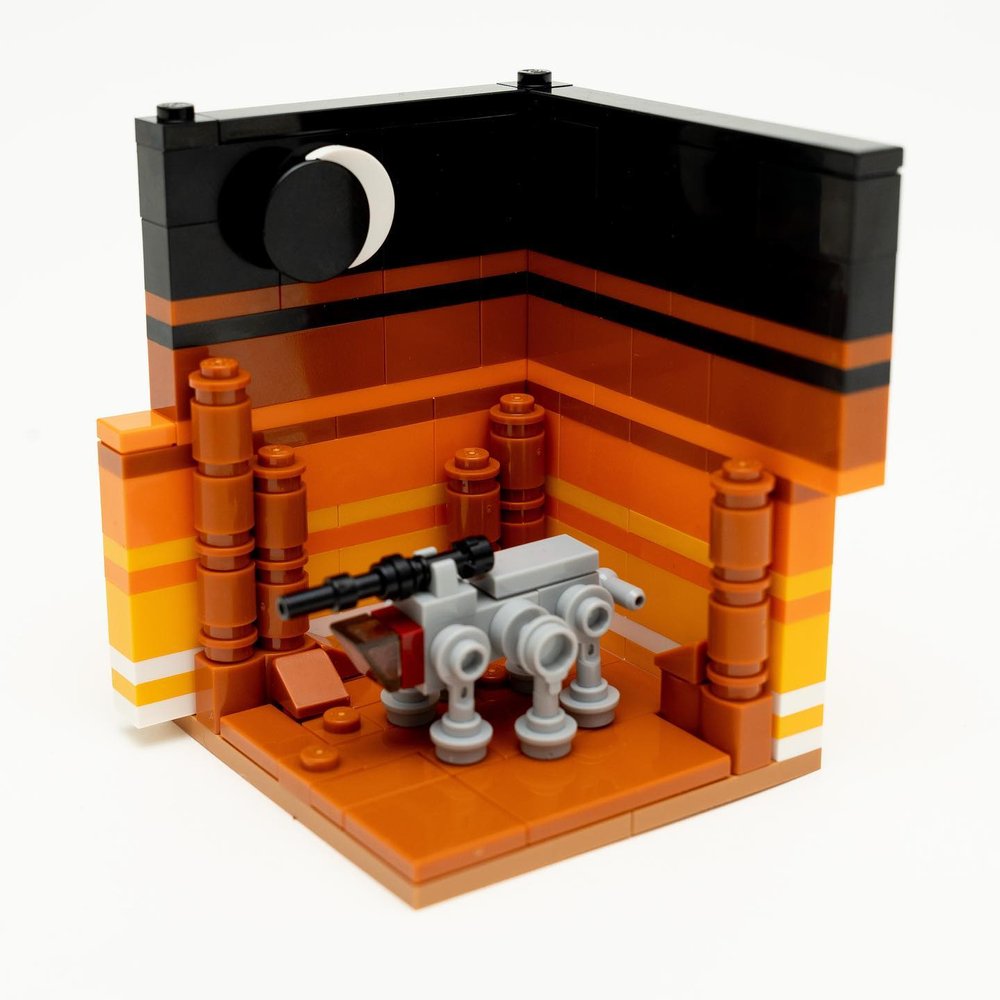
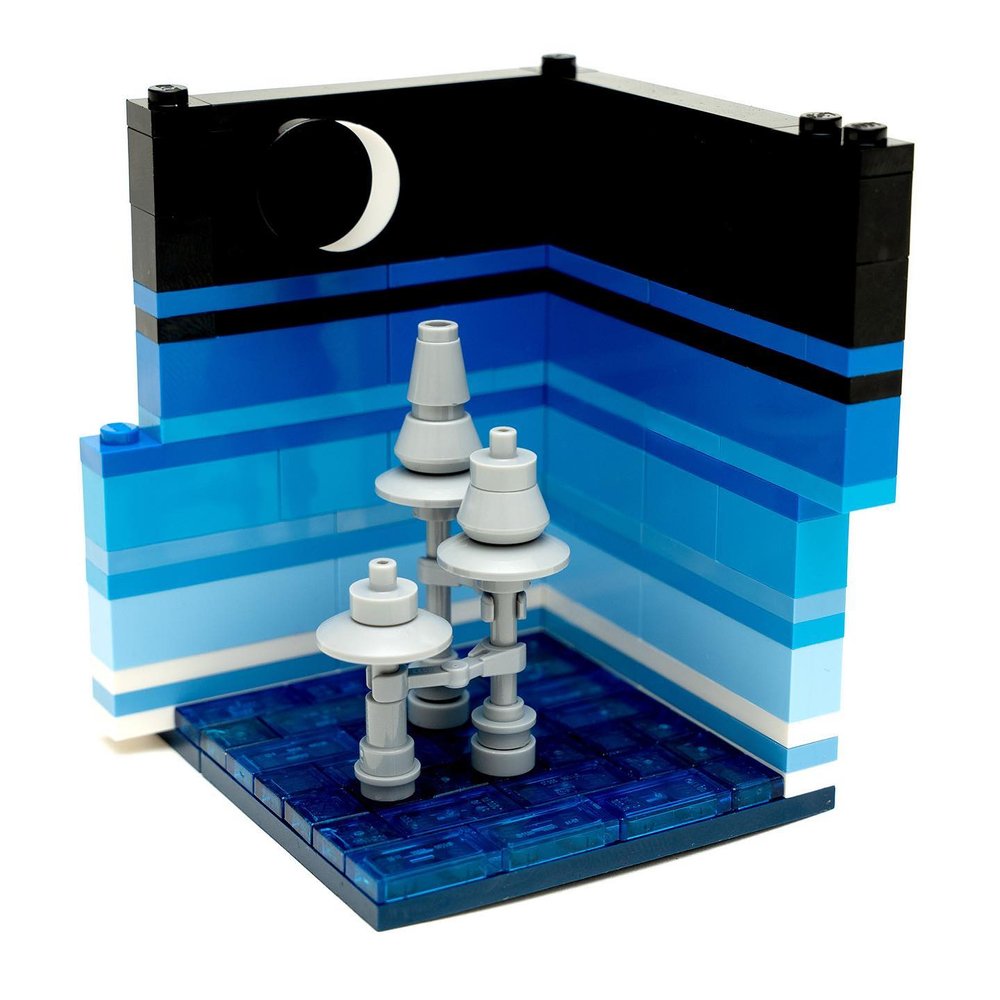
Kate Hunter chose to forgo minifigures as well in her habitat series based on her home region around Bend, Oregon. Each habitat creatively focuses on microscale scenes of the places she finds magical.
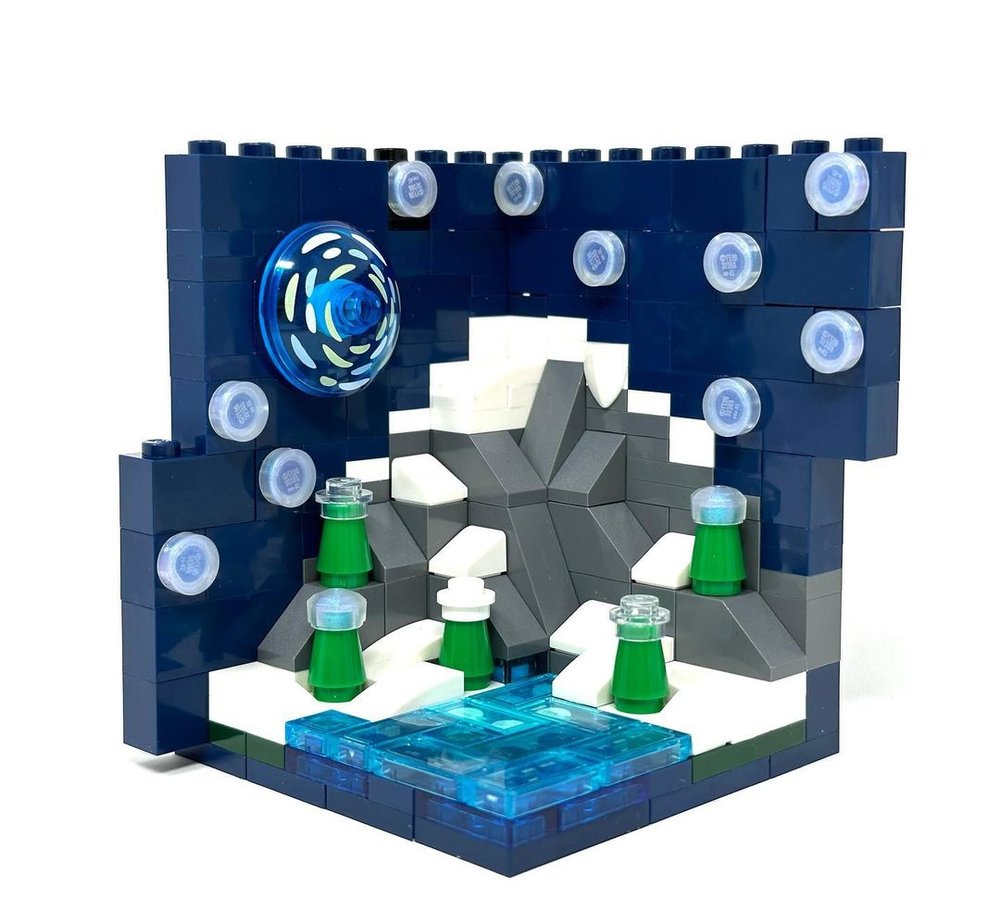
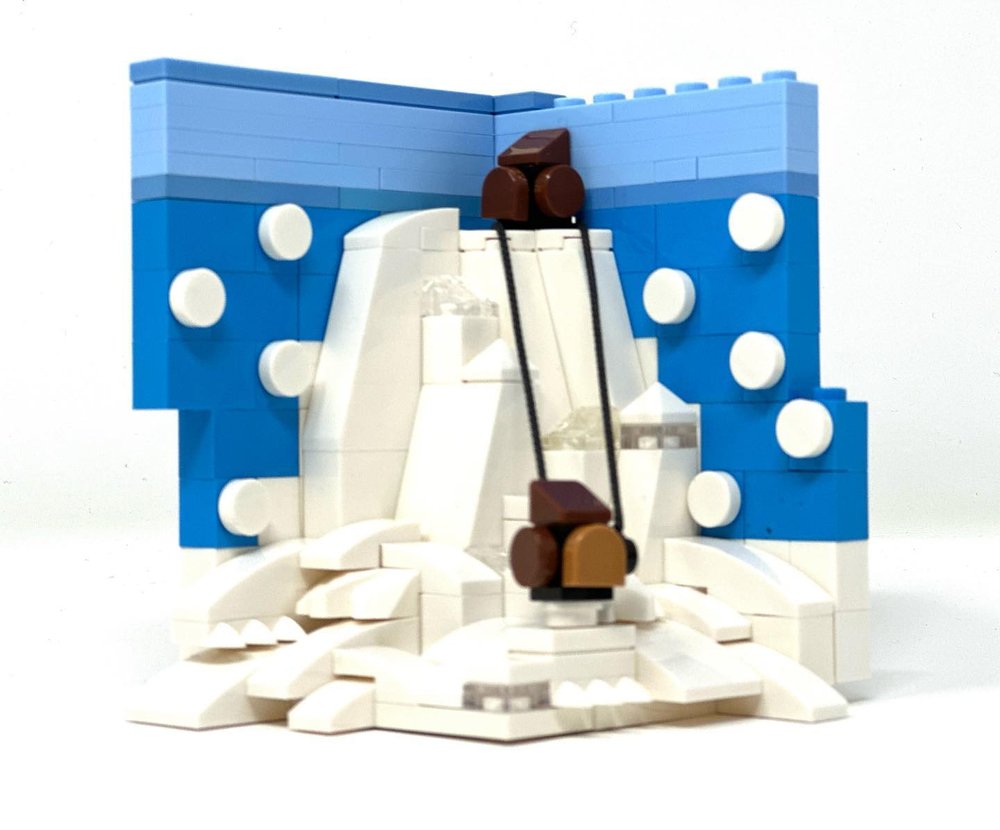
Going Big (or Small)
8x8 studs square is the size Jen favors for her Instagram Habitat Challenges, but it’s not the only size people build habitats in. For example, take a look at these scaled-down micro-habitats developed by Lego_nano_1 with a 6x6 base and shorter height.
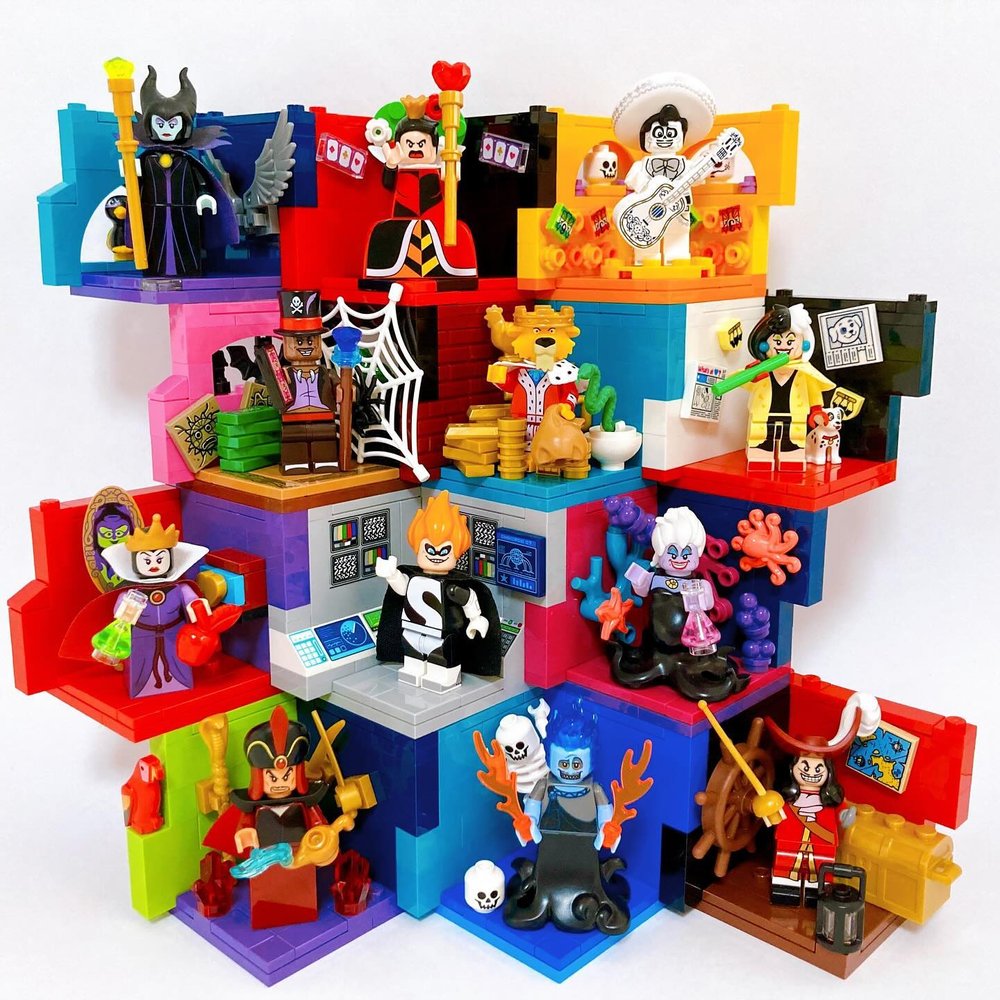
She also built some oversized habitats still at minifigure scale. This set of Beauty and the Beast scenes allows her more room for an expansive setting with lots of detail befitting the grand castle, including the ballroom and library.
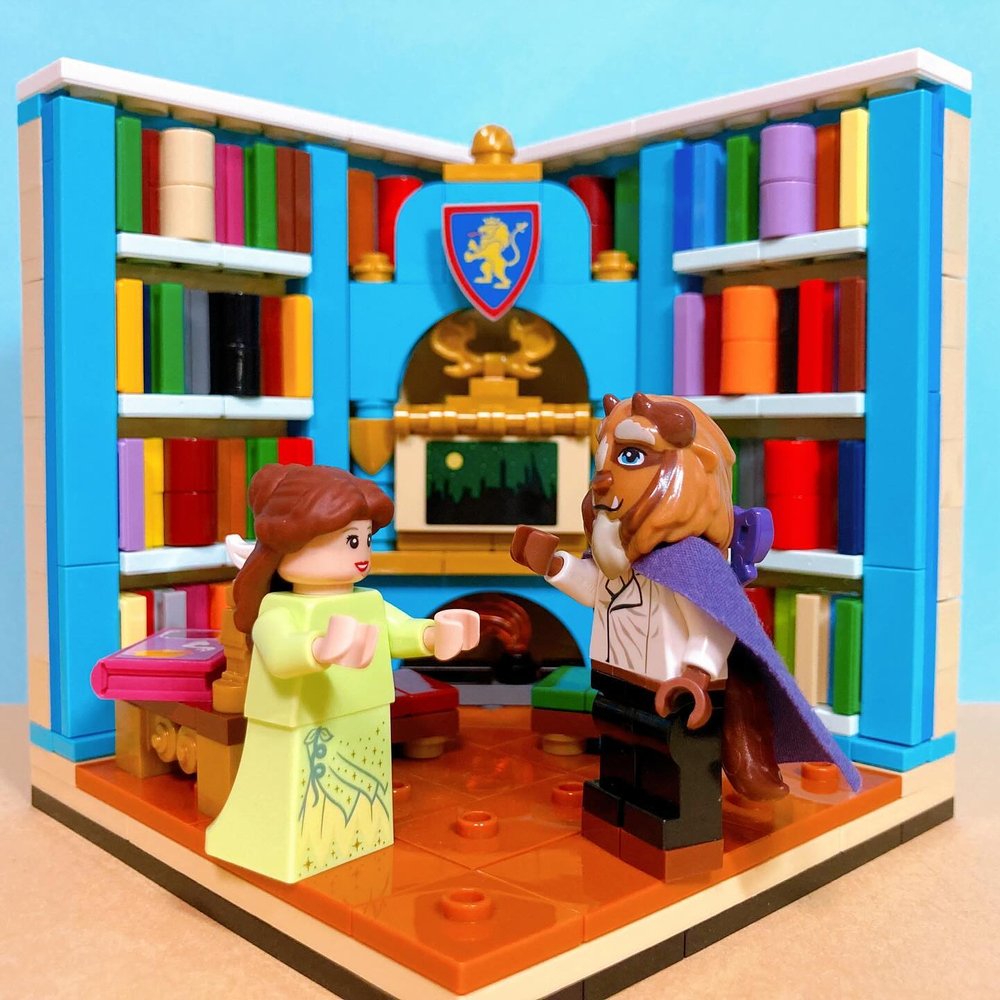
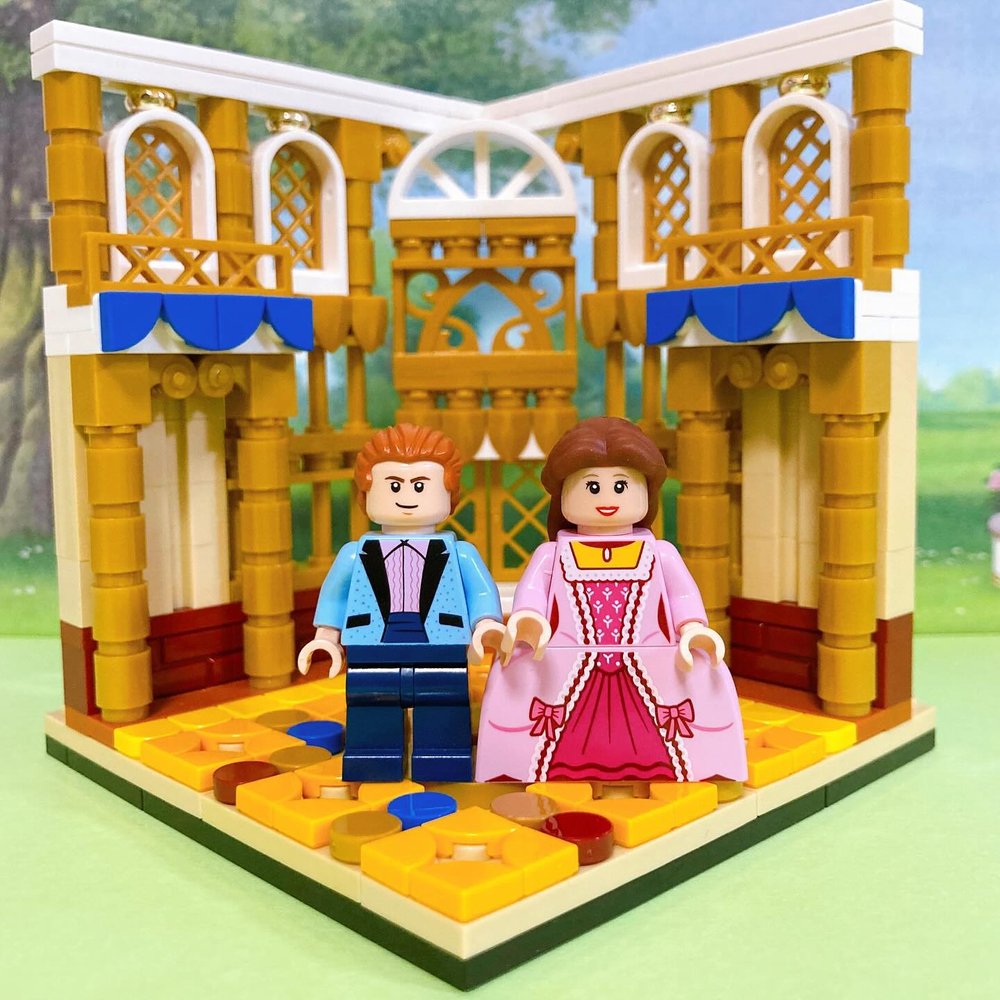
Venturing away from minifigures, Darren Donnelly upsized his habitats to work with his custom BrickHeadz creations instead of minifigures. He leveraged what he knows best while developing his own size for what is still very recognizably the habitat structure for stacking.
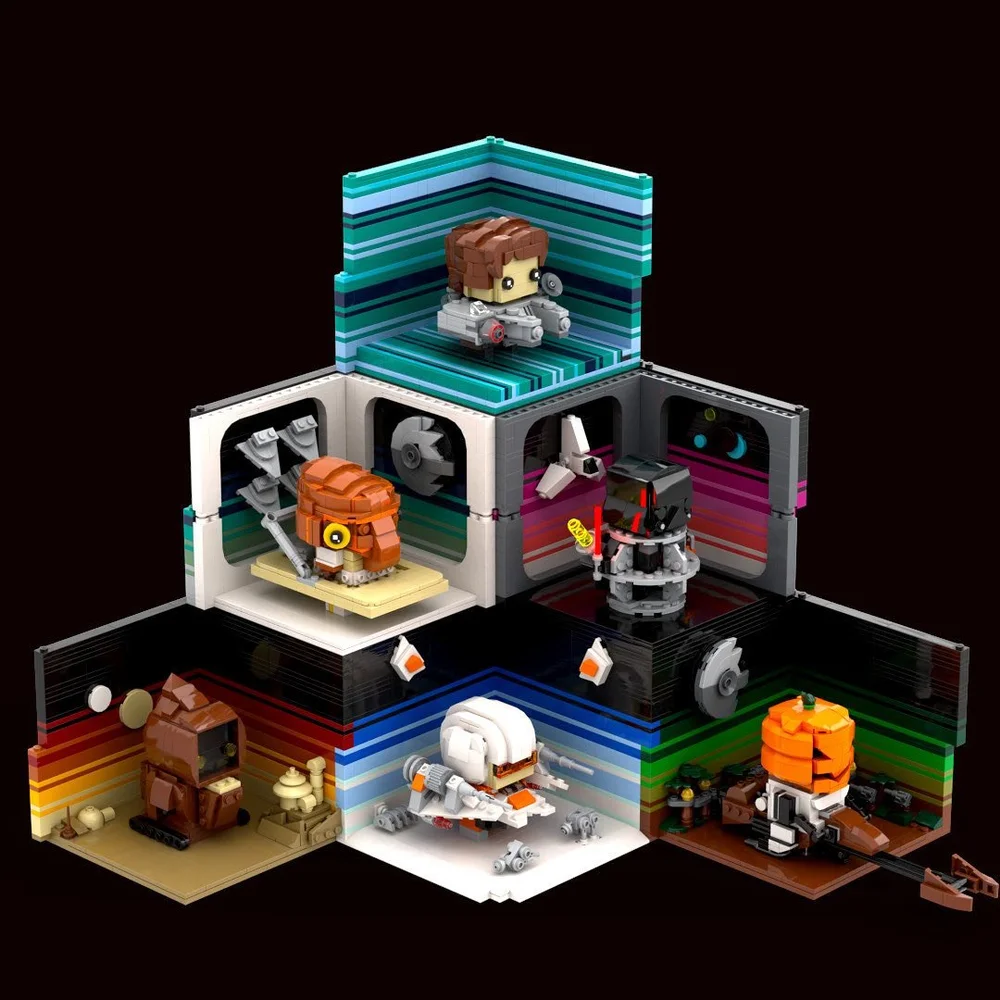
Brickheadz Style “Star Wars Halloween Costume Habitat Stack”
16x16 plates are also a convenient way of forming the base of oversized habitats.
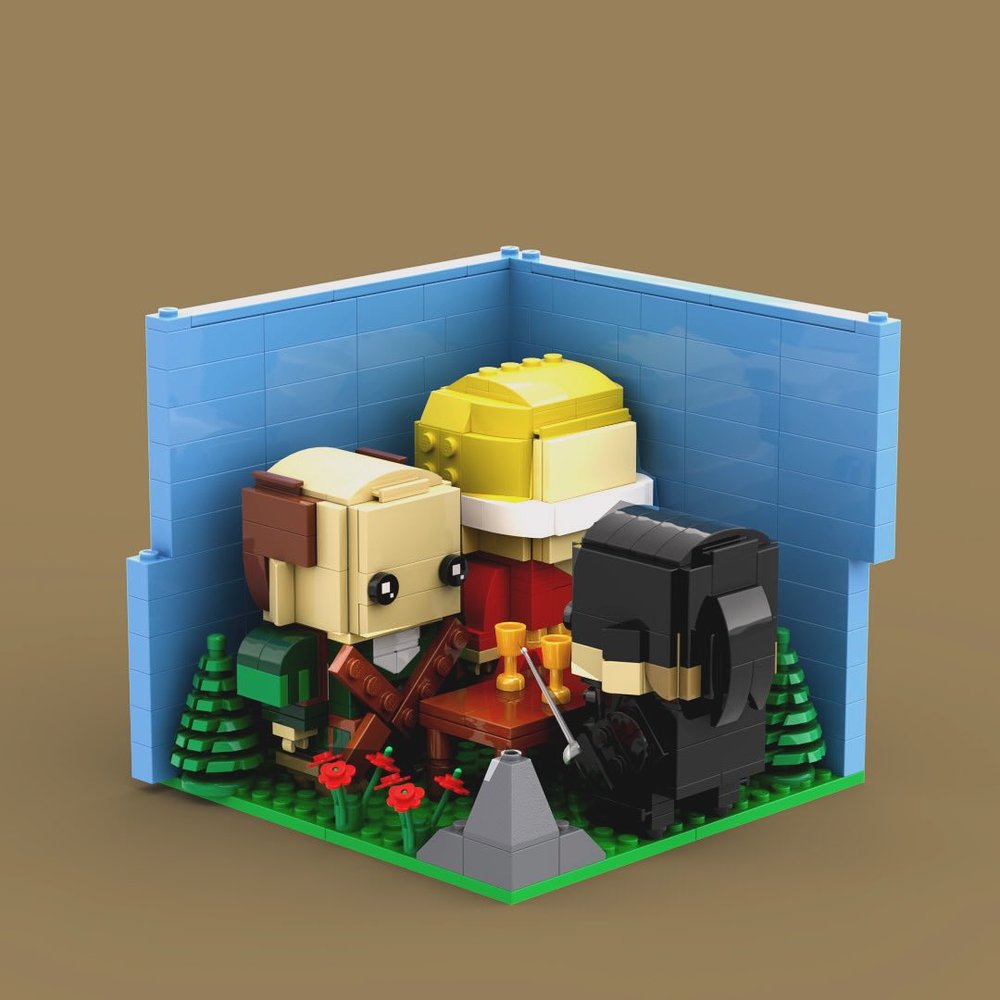
The Princess Bride, The Battle of Wits
Doug Kinney upsized his habitat format as well, this time to match the scale of more miniland style figures that are all brick-built.
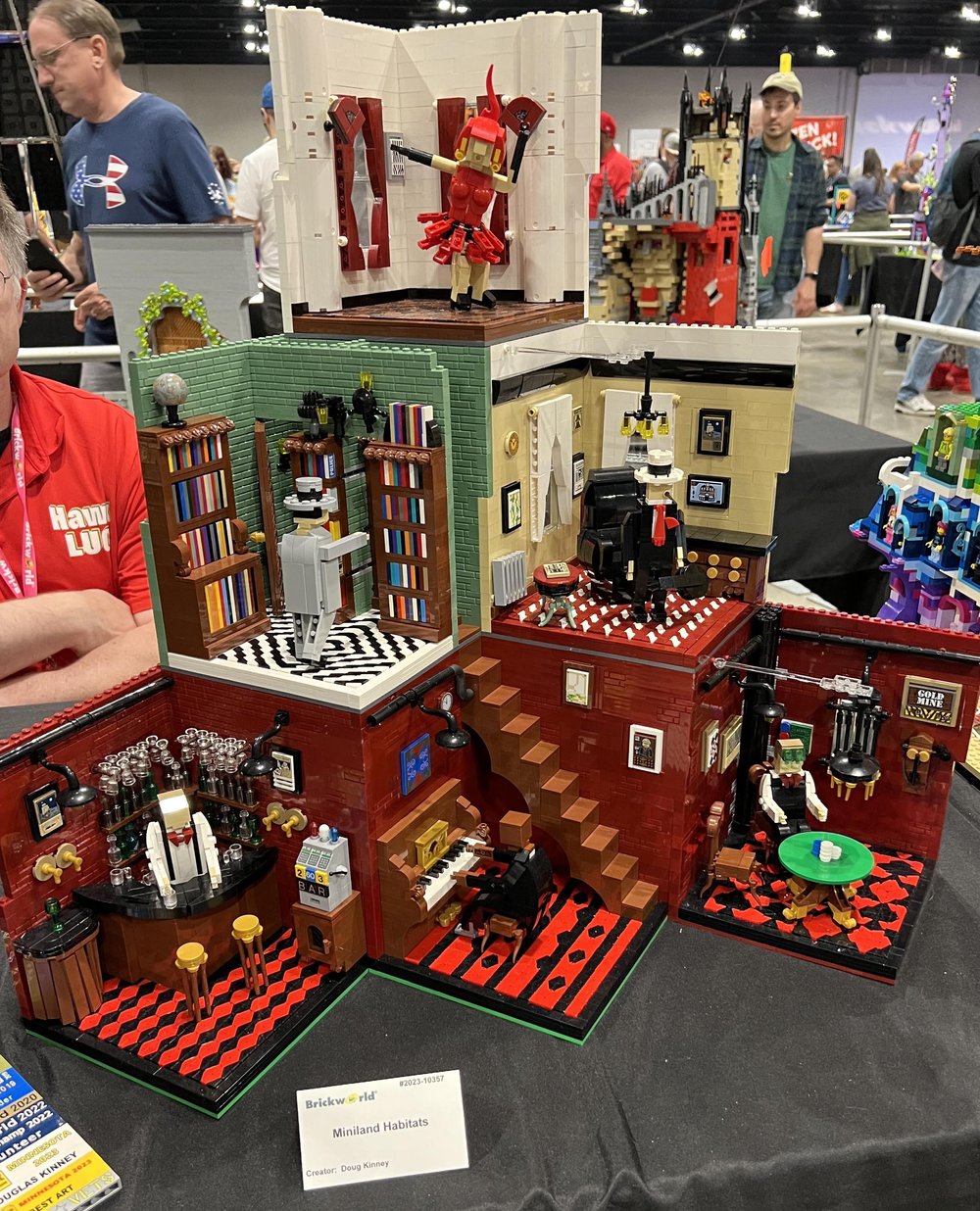
And last but not least, you can keep to the same 8x8 habitat size but go tall! I’ve often gone this route to better fit my vision for my habitats, including the wizard’s tower habitat. In its taller orientation, I feel the vertical format better fits the tower’s look, especially when combined with the other two habitats in the final habitat stack.
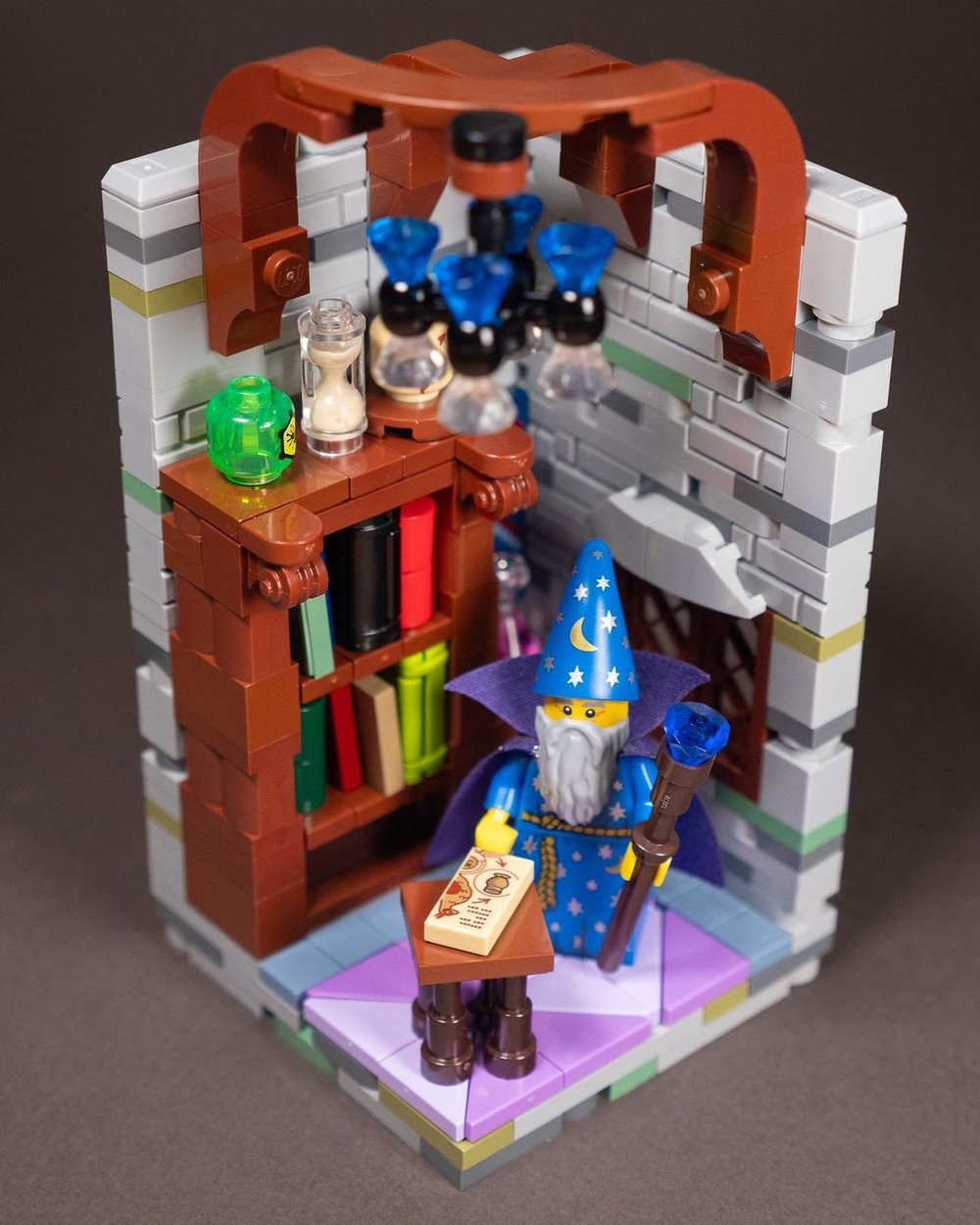
Leaving the Surface World Behind: Underwater, Underground, or SPACE!
We’ve touched on venturing off the surface world with some microscale space habitats, but there are many areas yet to venture into that take us from the Earth’s surface.
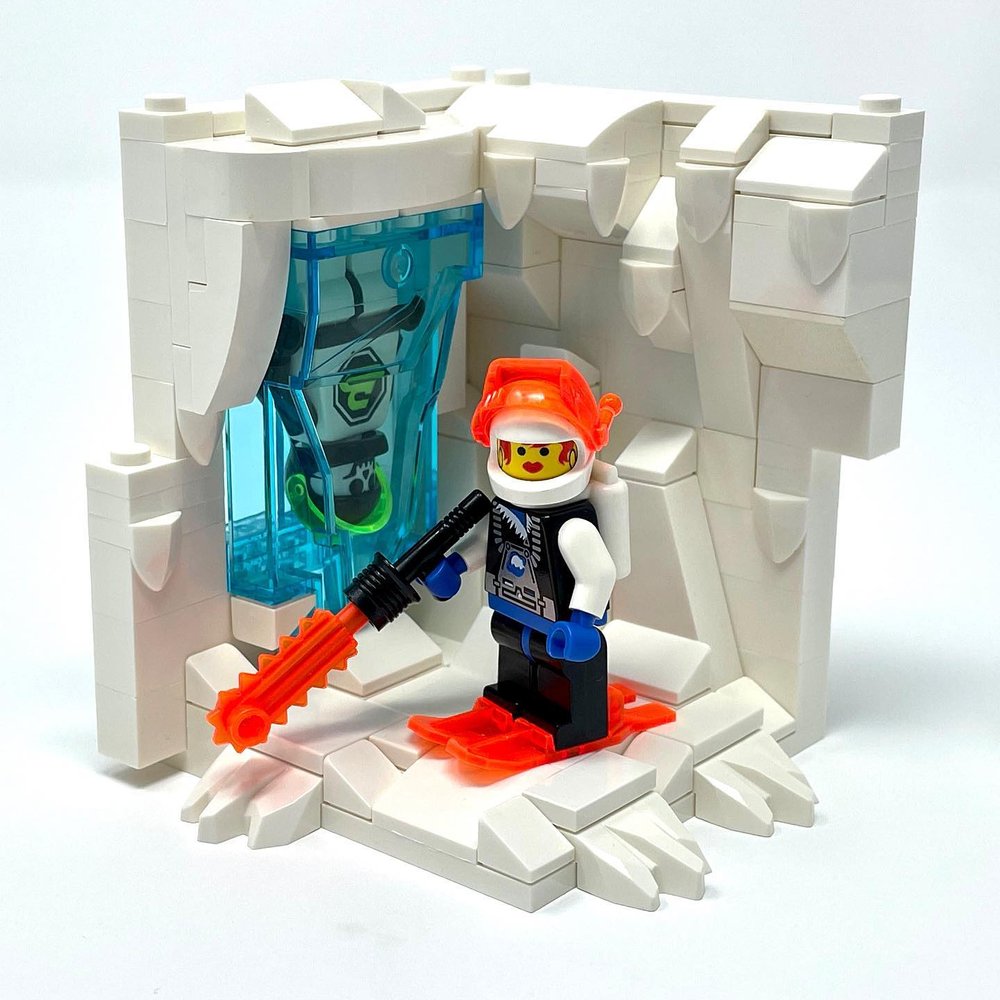
Let’s delve into some caves and underground spaces with these examples! Dana Knudson brings us to the snowy caves of Ice Planet 2002, including a minifigure frozen in ice thanks to the creative use of a transparent rock wall piece.
Virtigogh brings us to the icy den of the Wampa from Star Wars: The Empire Strikes Back, with Luke frozen to the cave ceiling. And I bring you to the depths of the underworld with this Hades habitat with its lava, rock walls, and the baddie’s iconic blue flames (from the Disney animated classic Hercules).
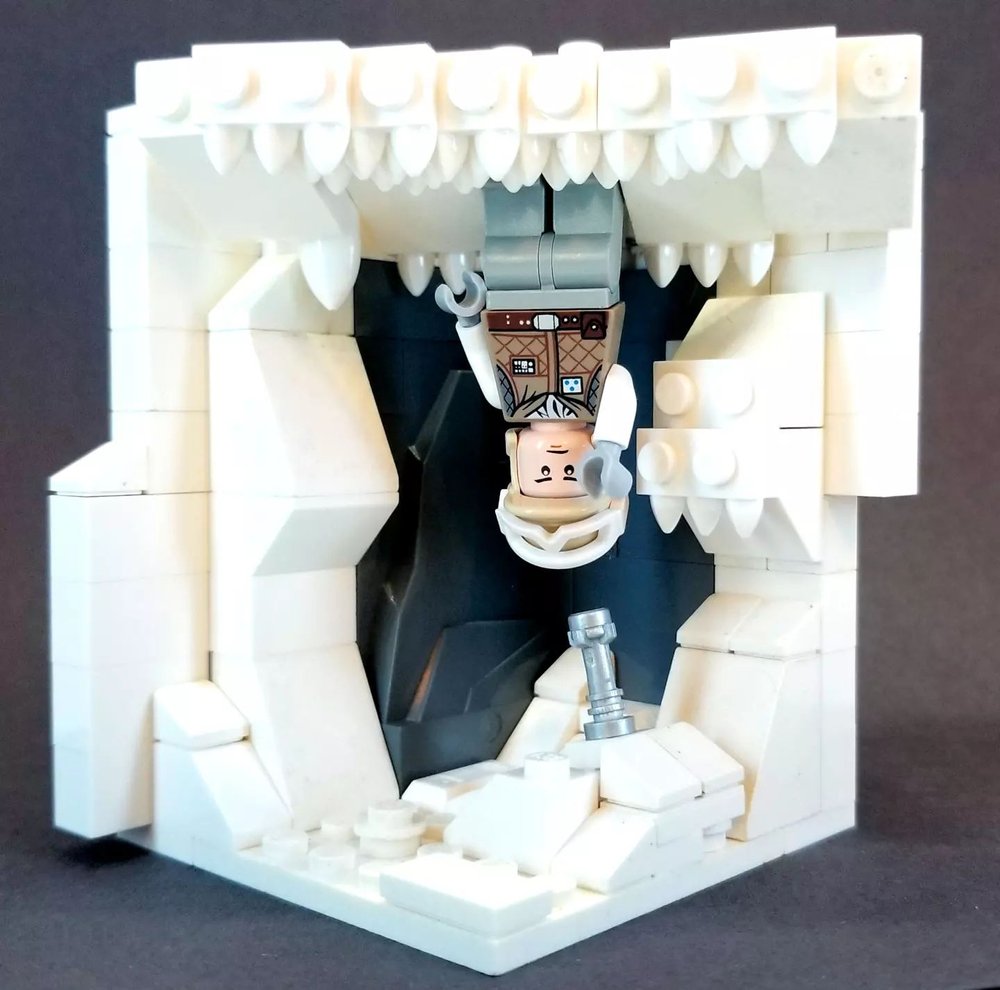
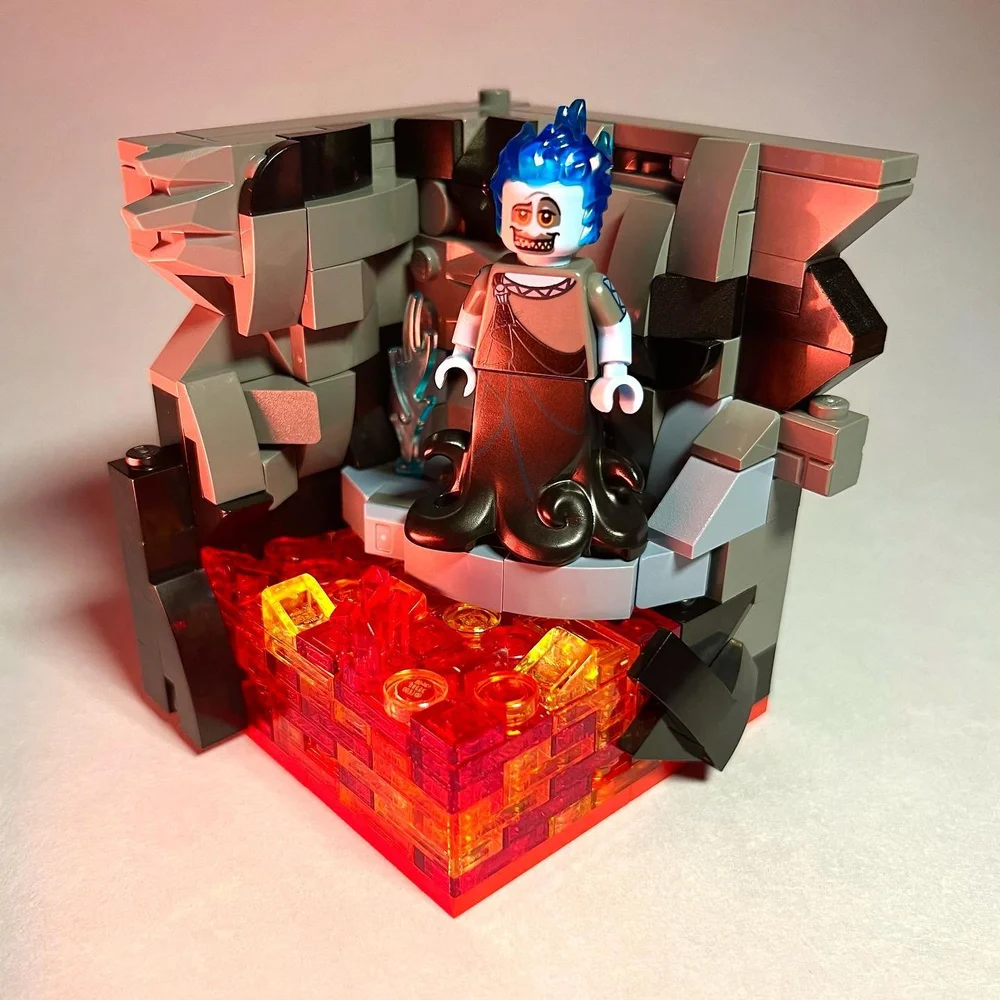
You can dive deep into the ocean as well. Transparent bricks really come in handy to give the feel of water instead of walls. But you’ll see how the examples below use different strategies for the habitat walls, including underwater foliage and rocks.
Thomas (minimalbricks) brings us a glowing rendition of Ursula wielding her magic and potions, which uses a deliberate mix of black and transparent bricks and a glowing center. Next up (or down), Nick Sweetman brings Ariel’s undersea world to life using a dappled mix of transparent plates for a watery, shimmery effect, with seaweed and coral to enhance the look.
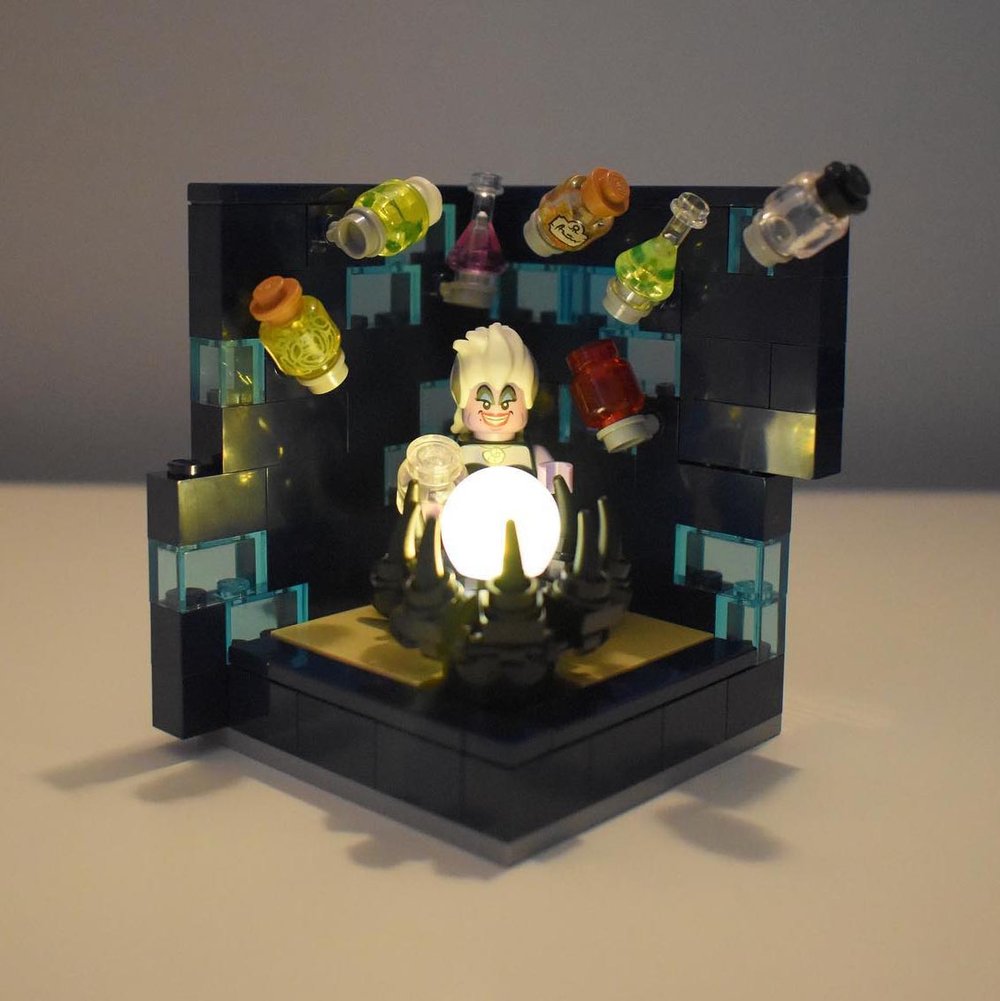
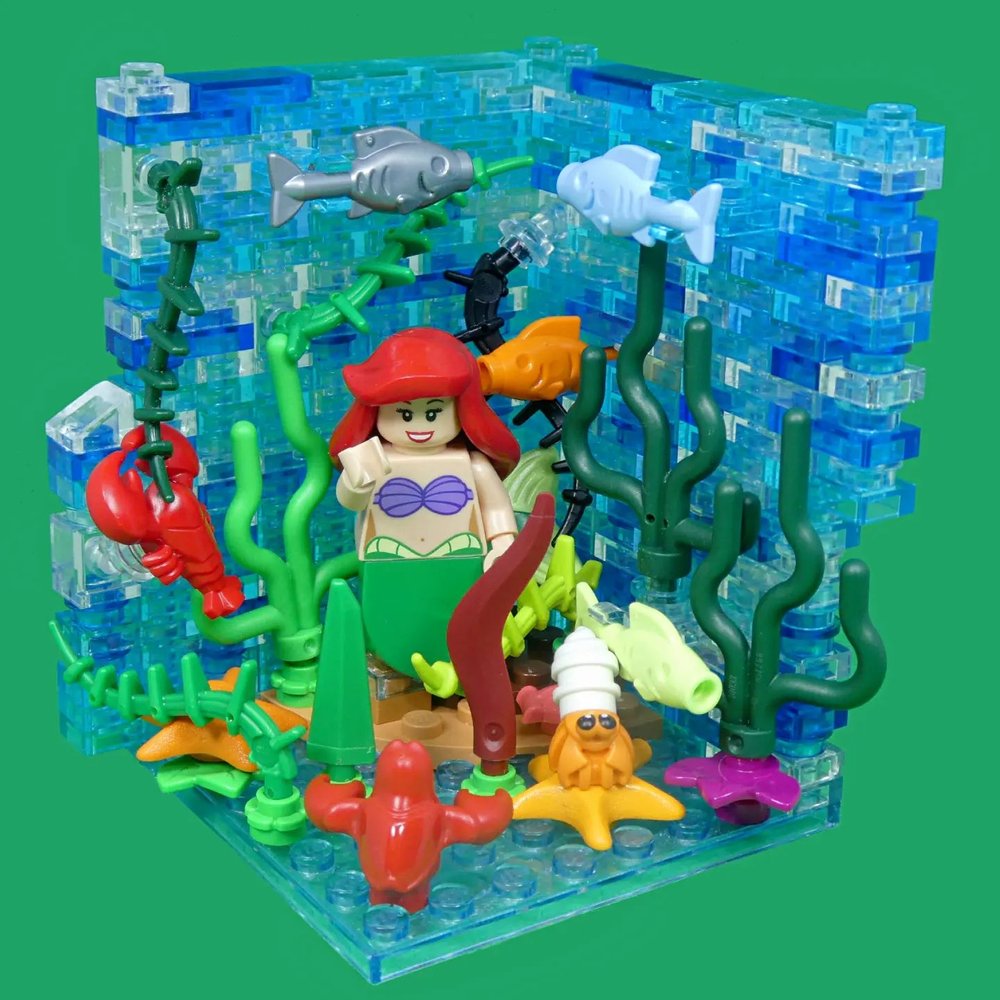
Palixa And The Bricks uses a color gradient and sea life to create an immersive undersea world. She uses 1x1 plates to represent Nemo, Dory, and Marlin in comparison to using an actual LEGO shark as Bruce. She also uses the tactic of extending elements beyond the back of the habitat to achieve the look she’s going for, leaving only the head of the shark visible in the habitat.
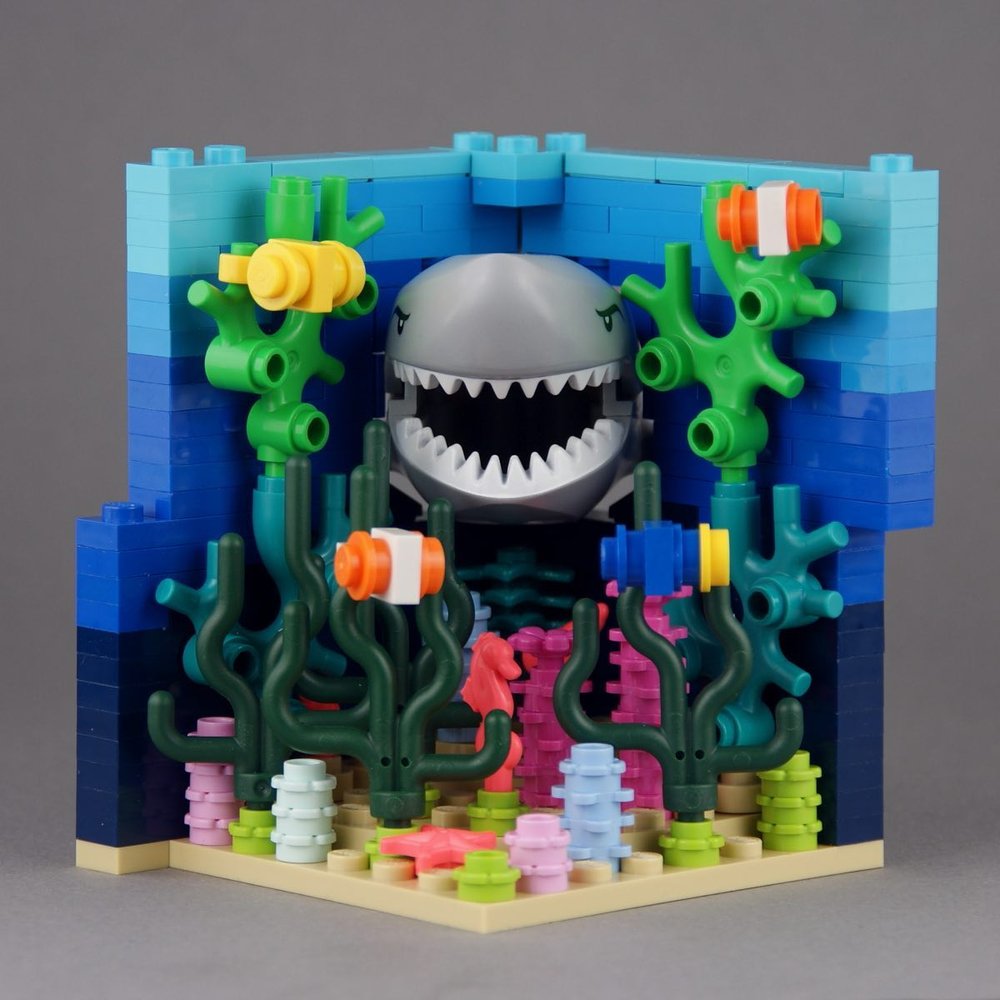
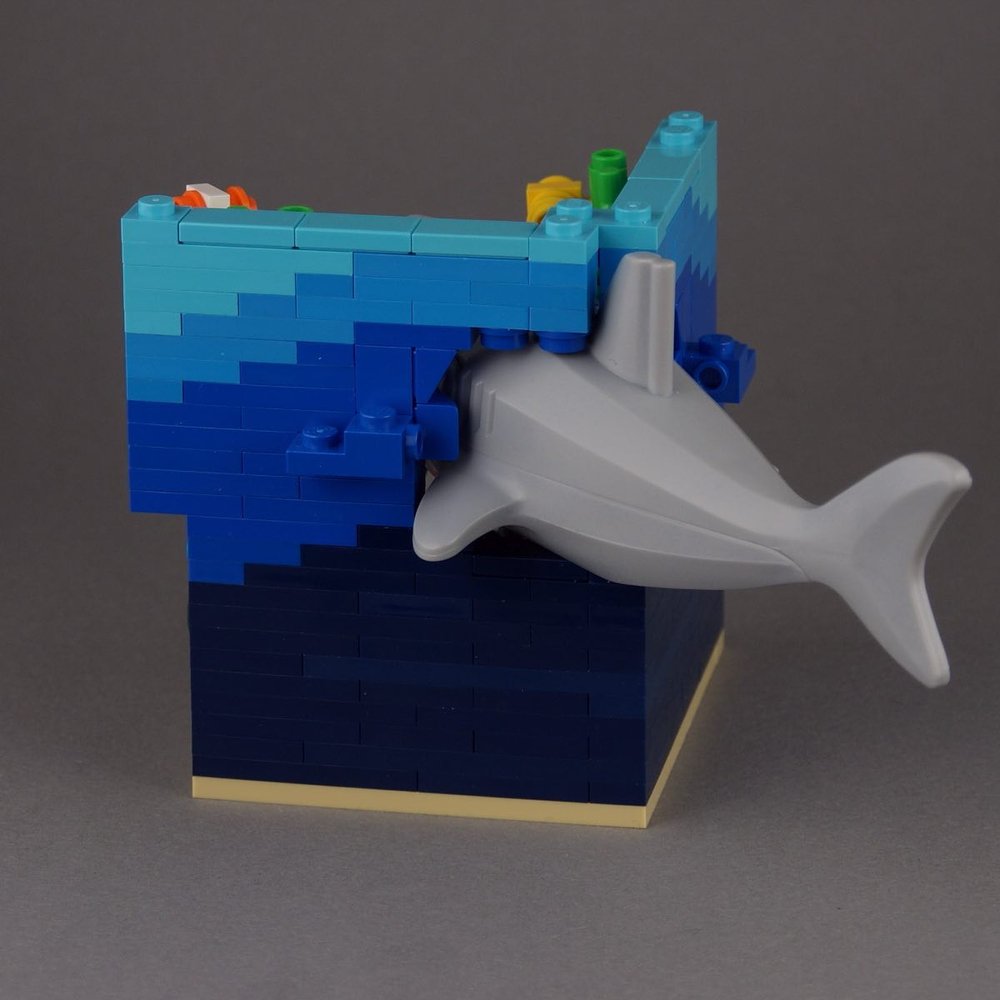
This is another advanced technique sometimes used where things stick out the back of the habitat to create extra depth or dimension—or just to fit something in like this shark. As we say with LEGO habitats, the back can be as ugly as you want!
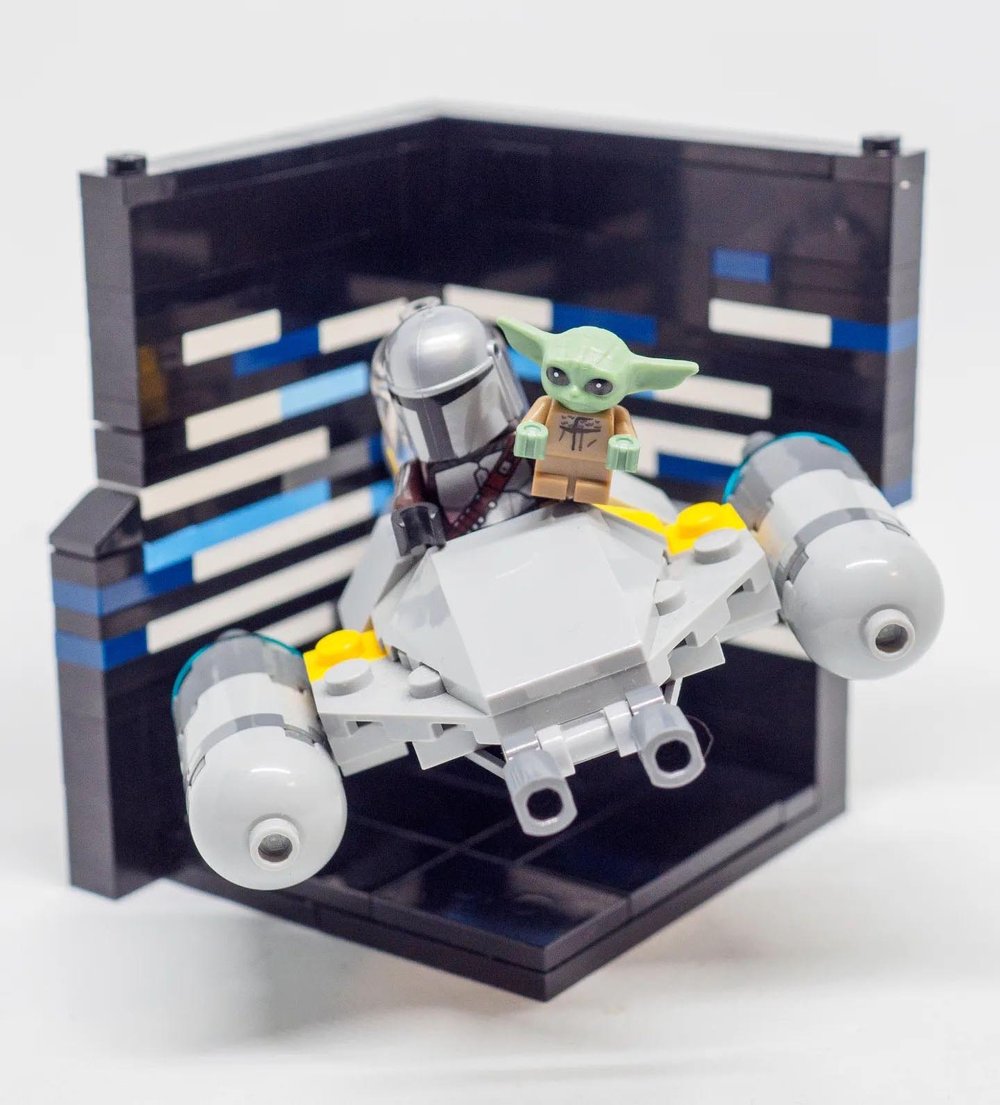
And then we have nowhere left to go but space! For our last habitat, Yabs Lee (brickapal00za) not only creates a space scene in a habitat but also shows how you can utilize vehicles in a habitat. Even if it extends forward a bit beyond the 8x8 base, a vehicle can be very effective for the final effect.
There are so many directions you can take and so many ways to challenge the LEGO habitat format for creative, engaging, and fun new builds. I hope some of these builds opened your eyes to what you can do with habitats by breaking out of the corner!
How have you broken the mold of the LEGO habitat standard and gotten out of the corner? Let us know in the comments below.
Do you want to help BrickNerd continue publishing articles like this one? Become a top patron like Charlie Stephens, Marc & Liz Puleo, Paige Mueller, Rob Klingberg from Brickstuff, John & Joshua Hanlon from Beyond the Brick, Megan Lum, Andy Price, Lukas Kurth from StoneWars, Wayne Tyler, Monica Innis, Dan Church, and Roxanne Baxter to show your support, get early access, exclusive swag and more.

